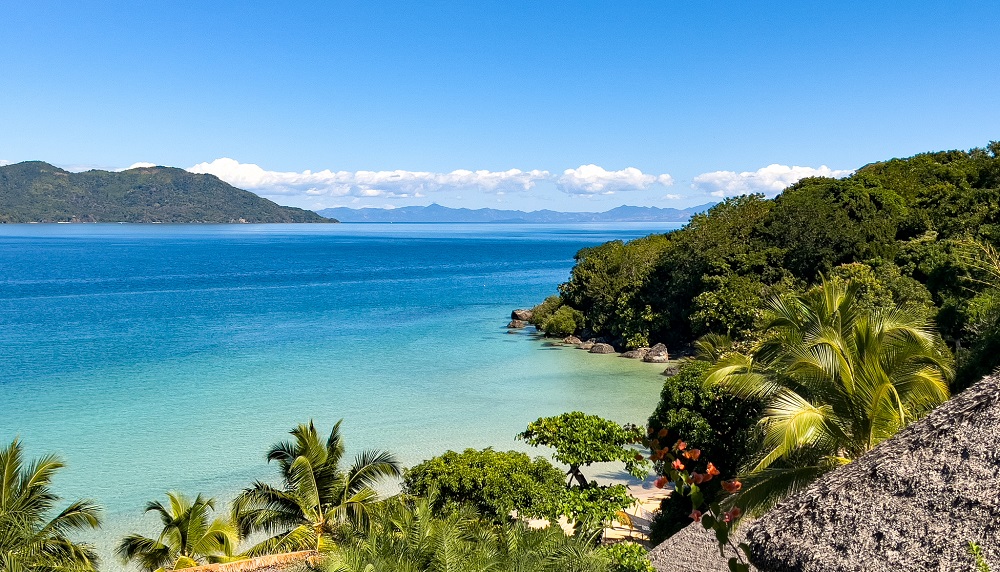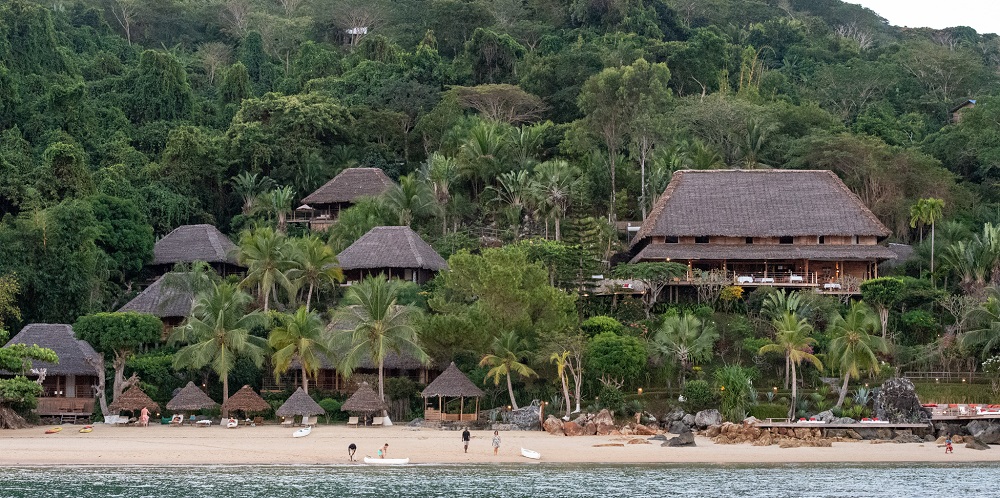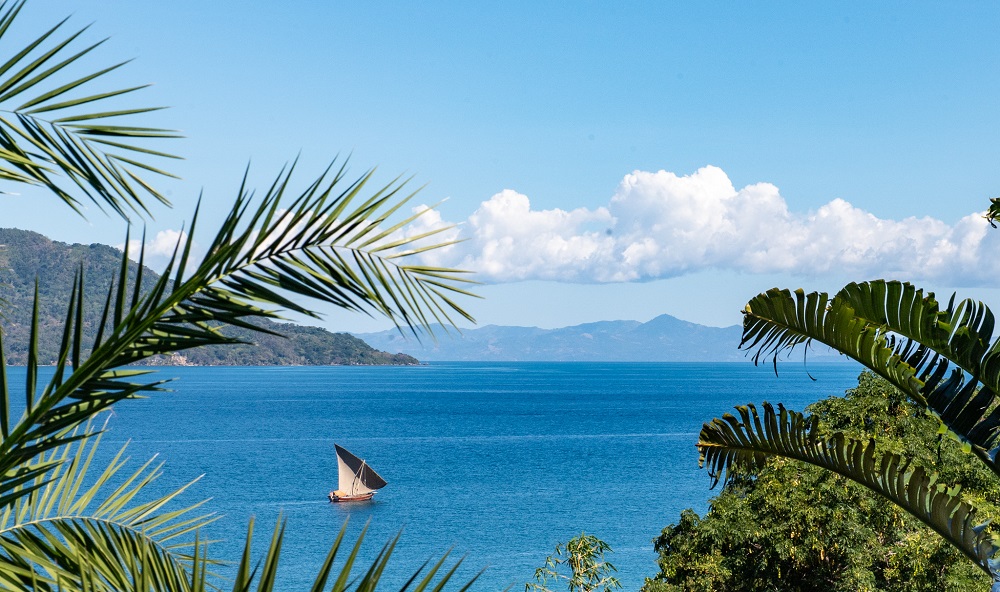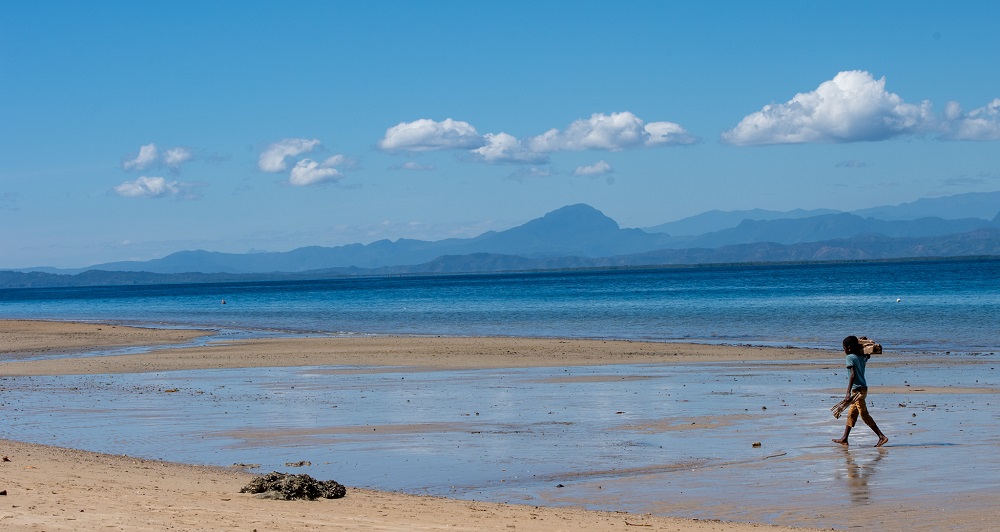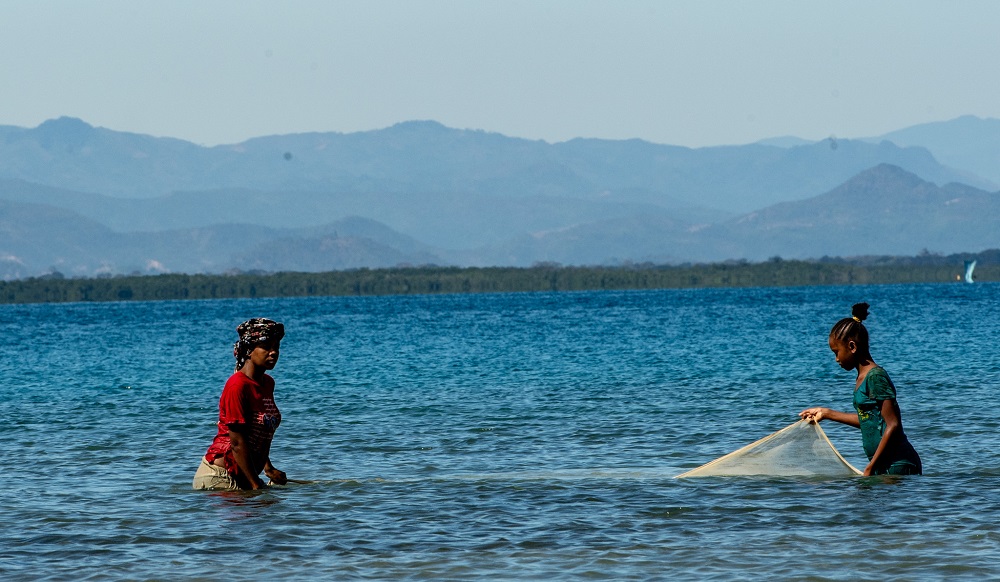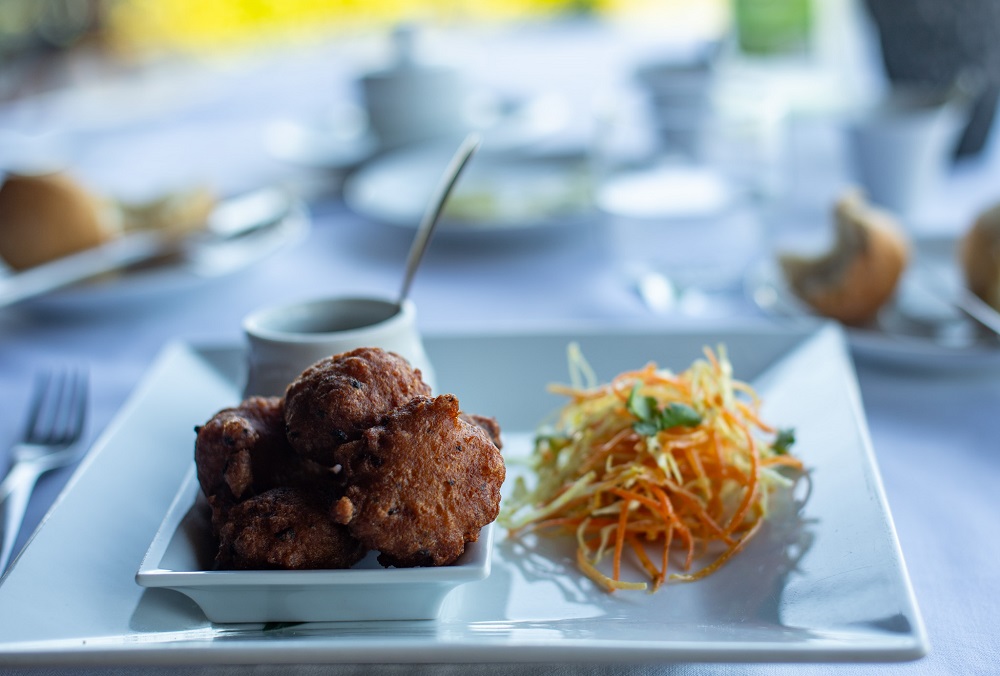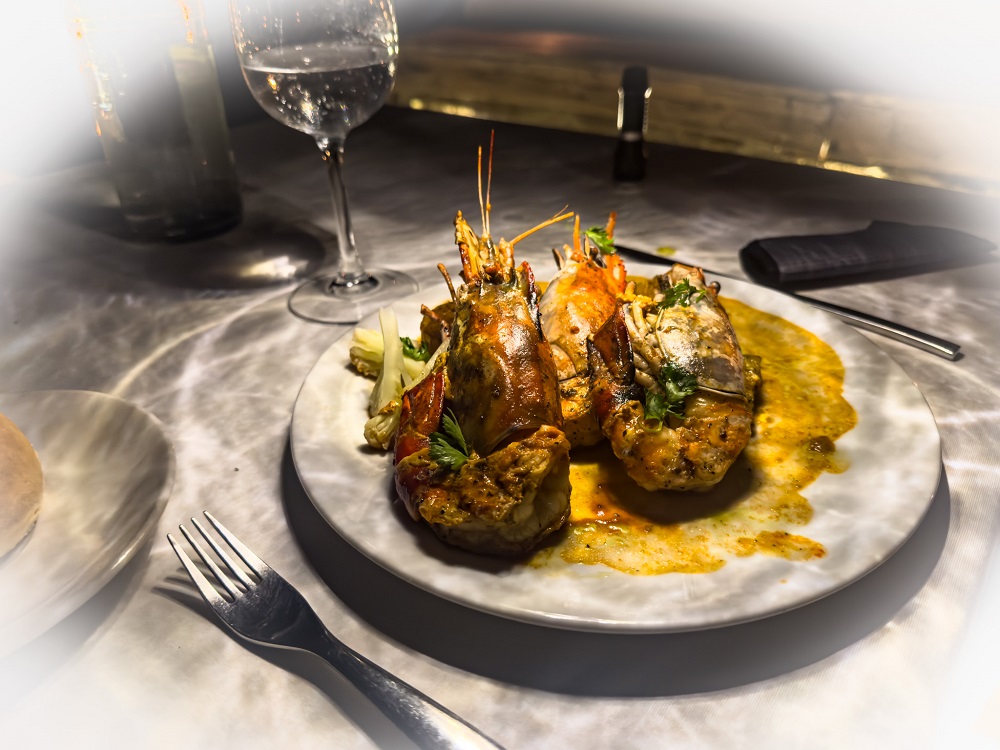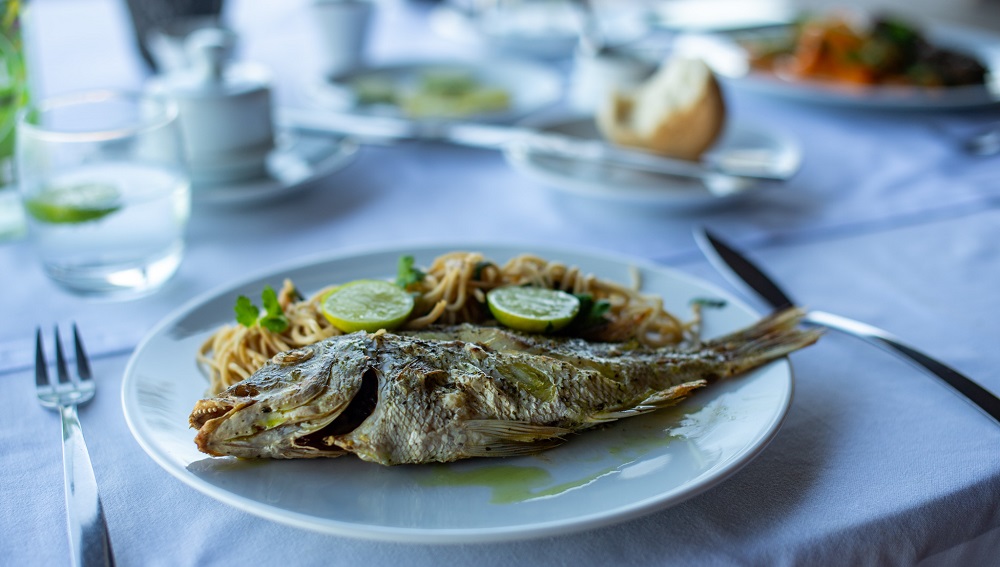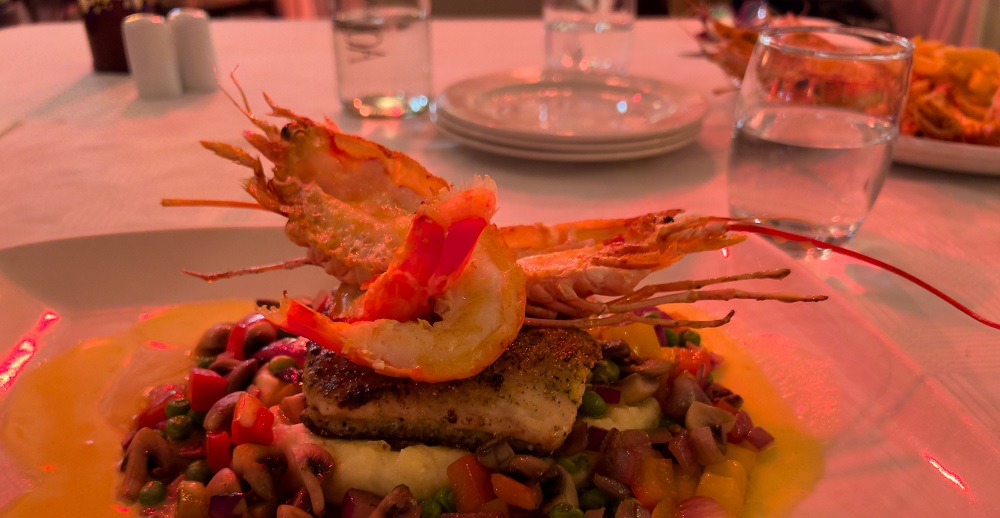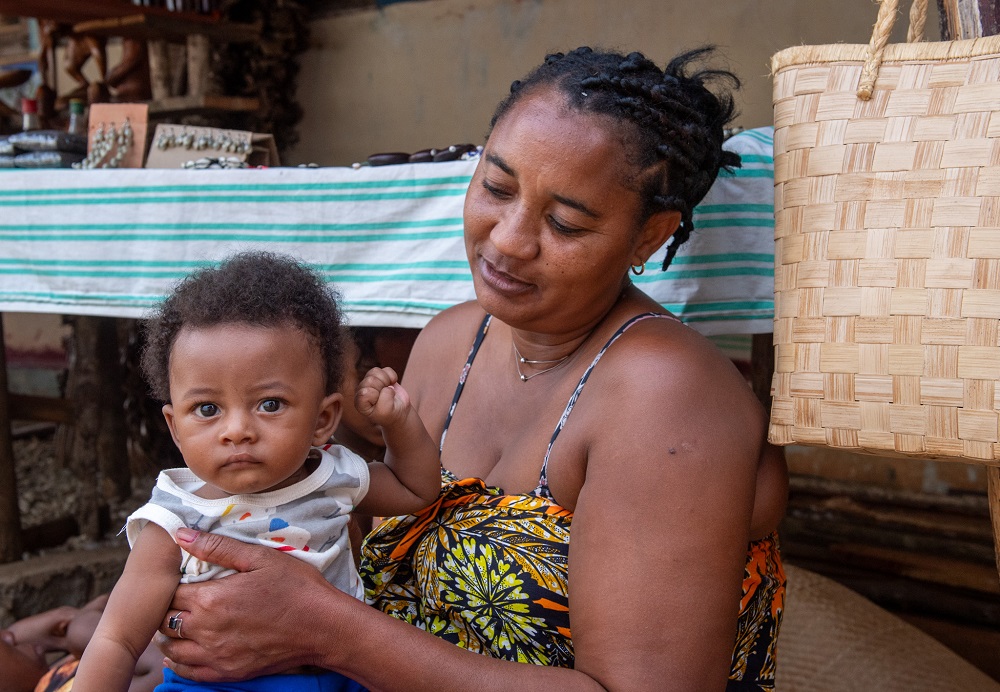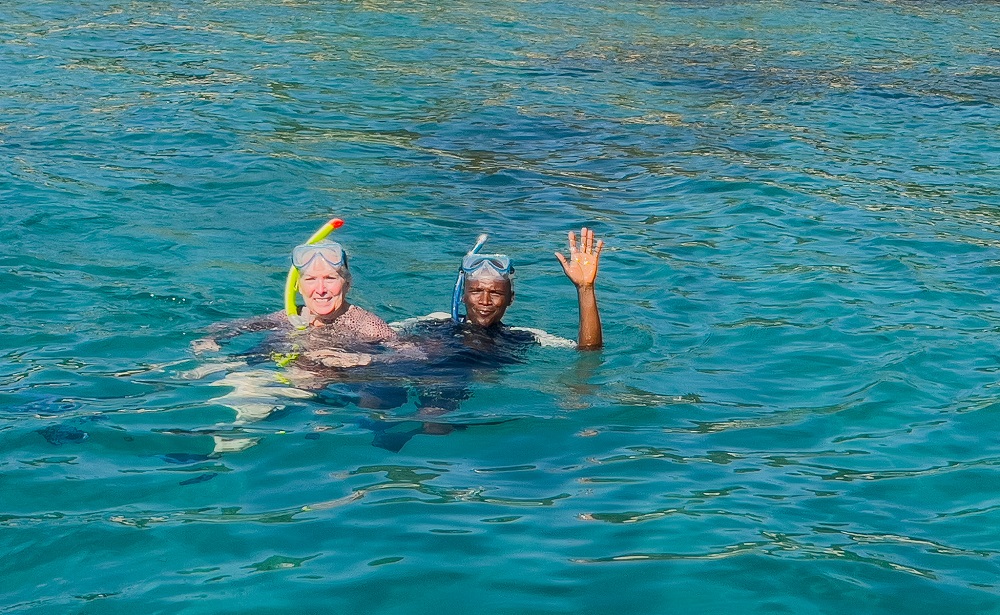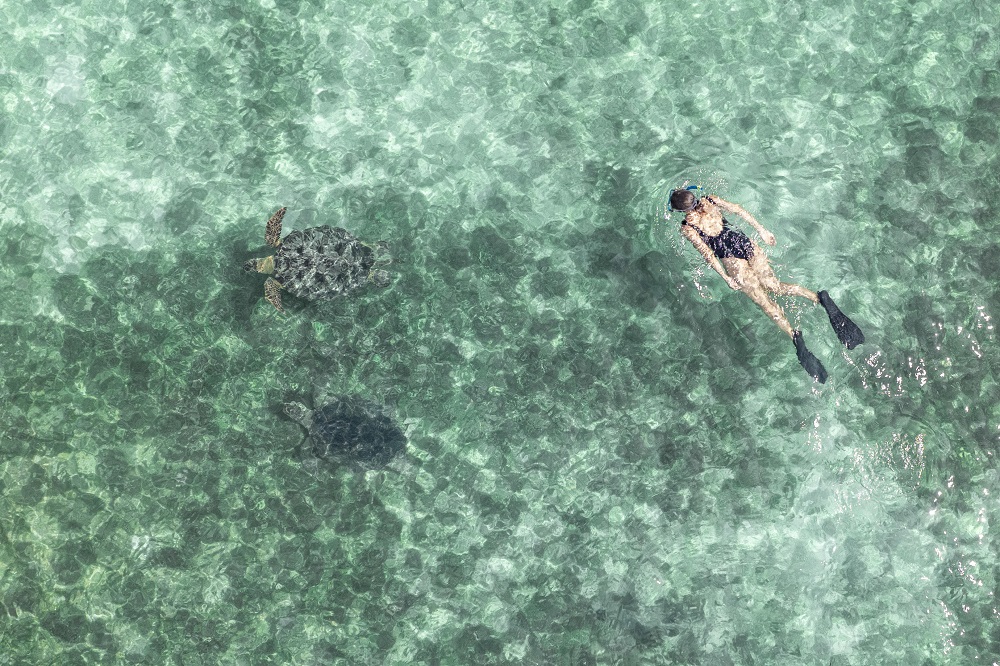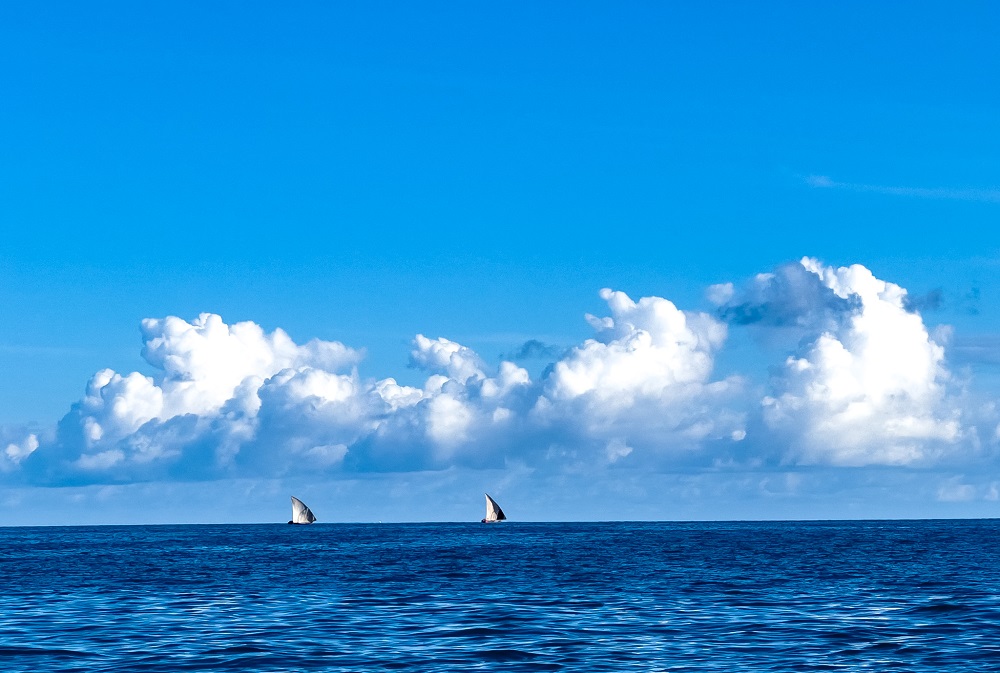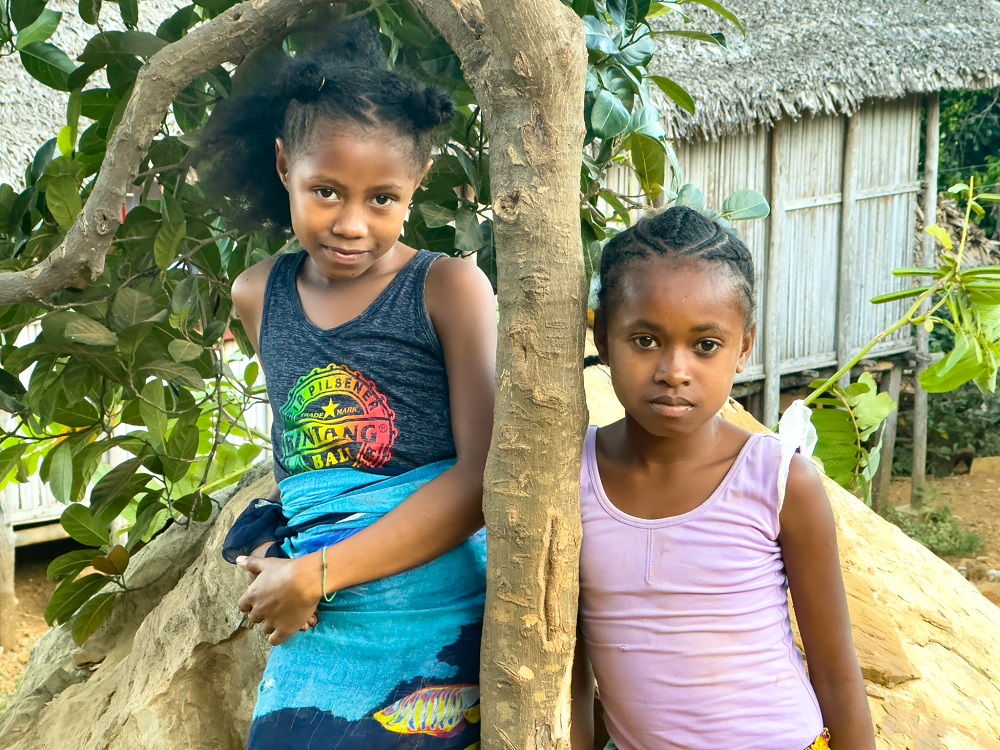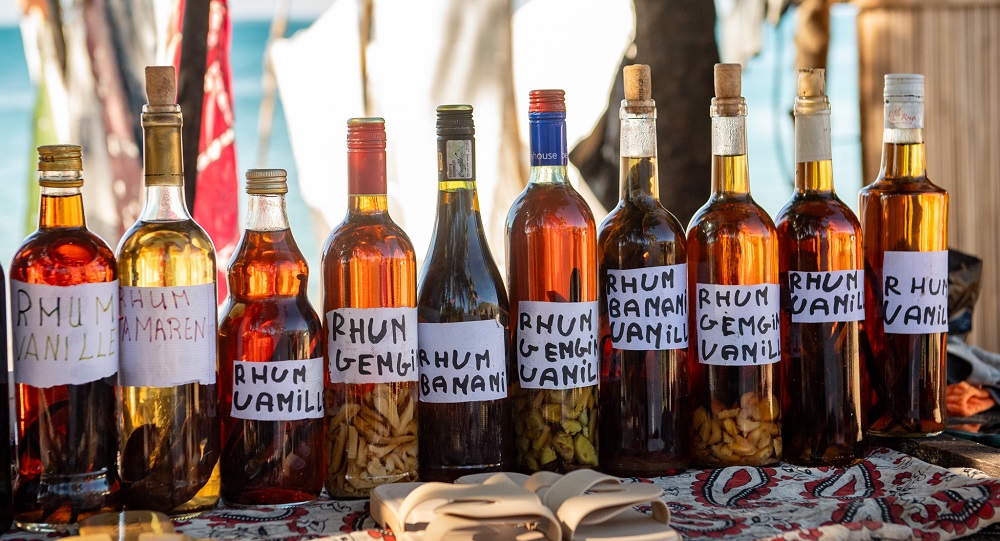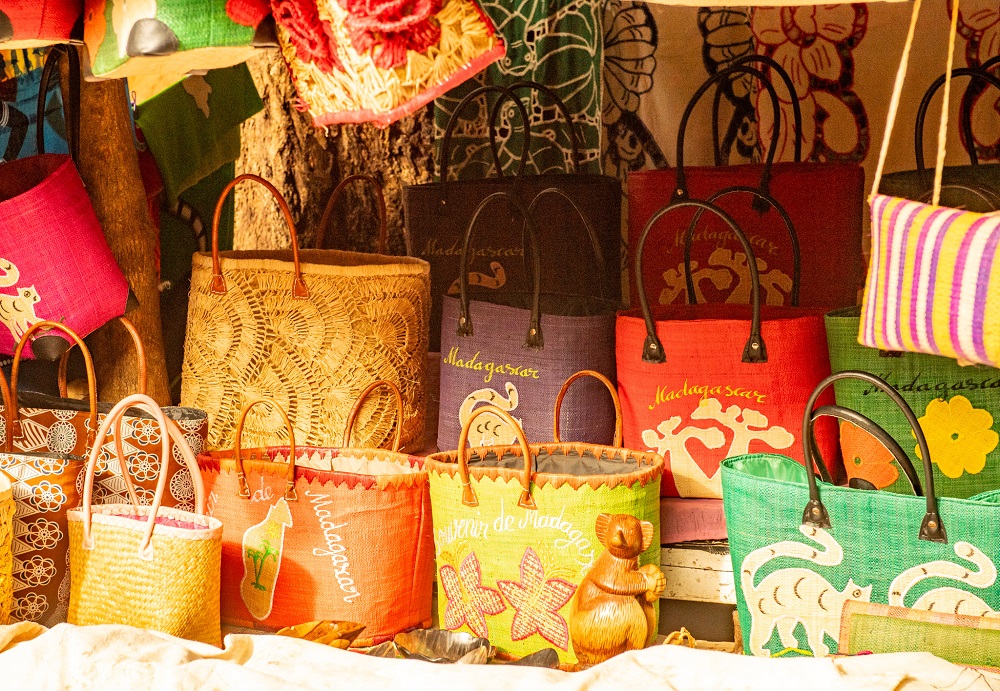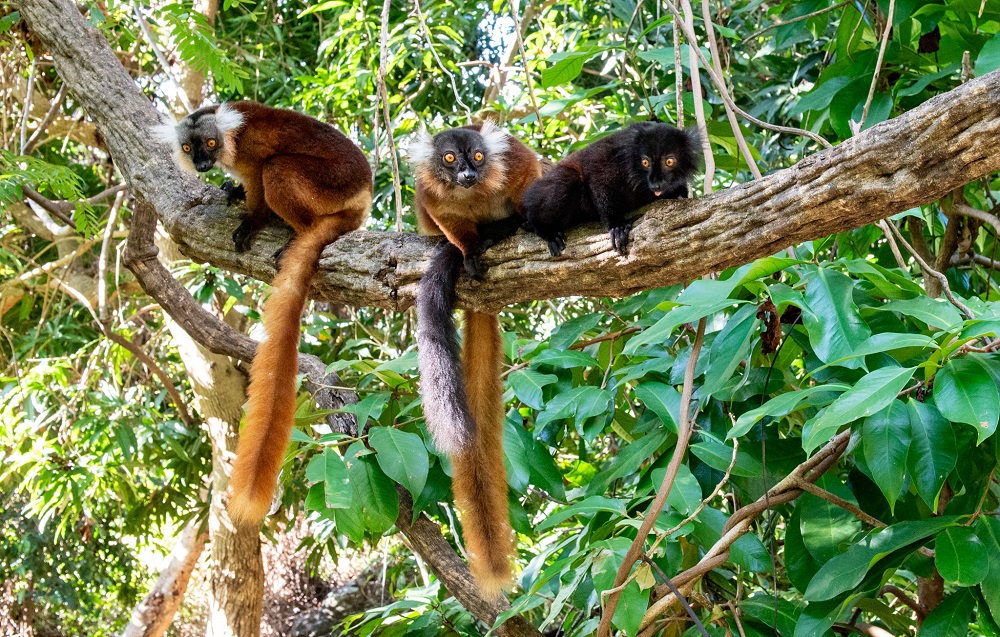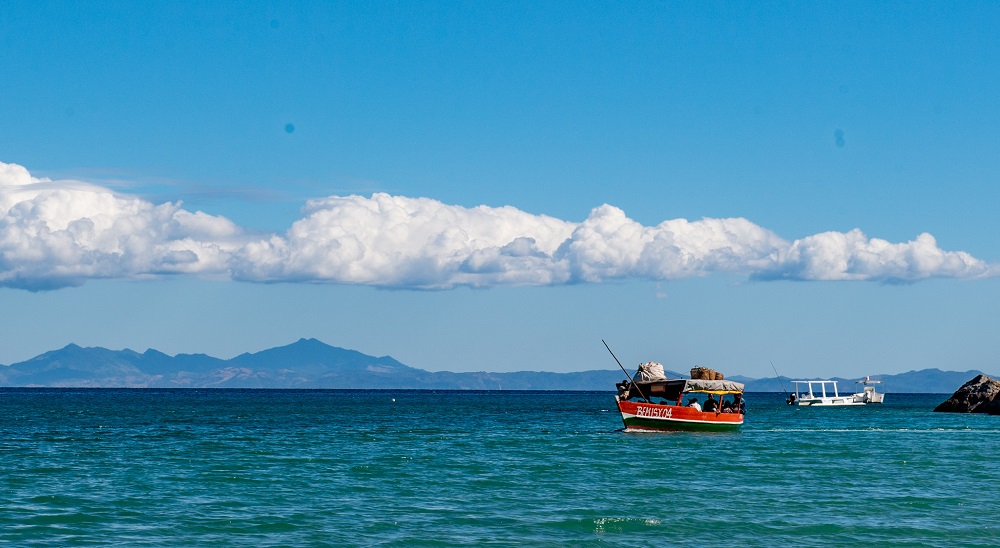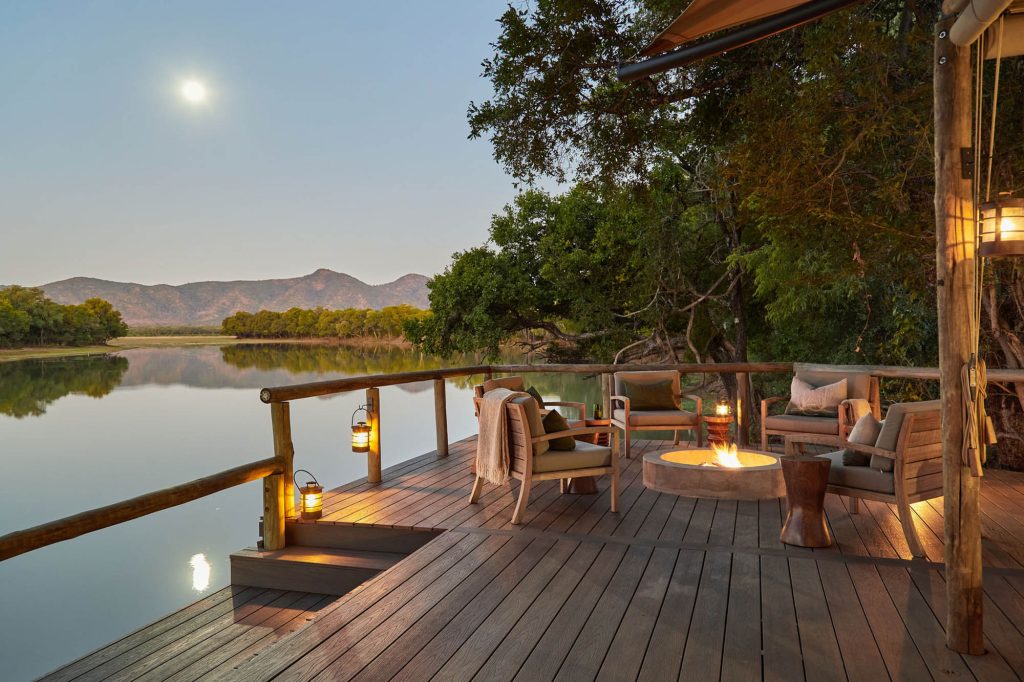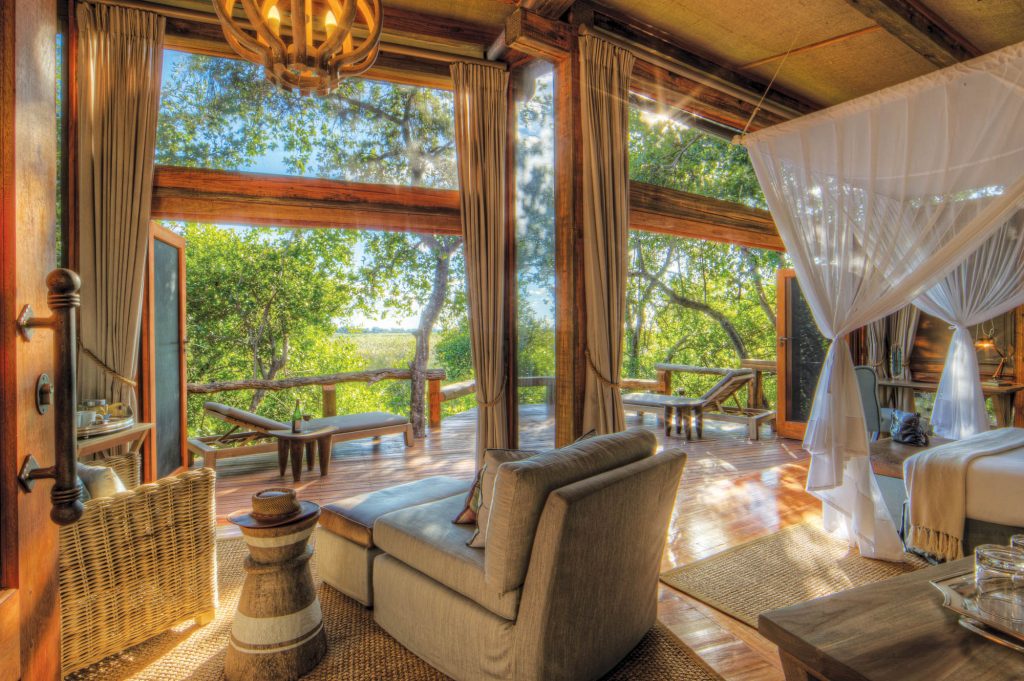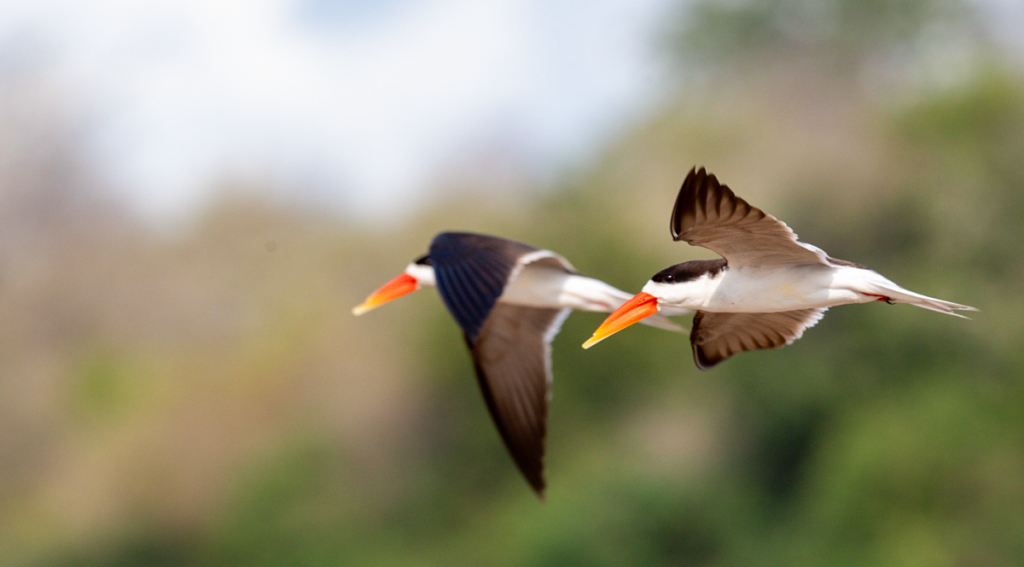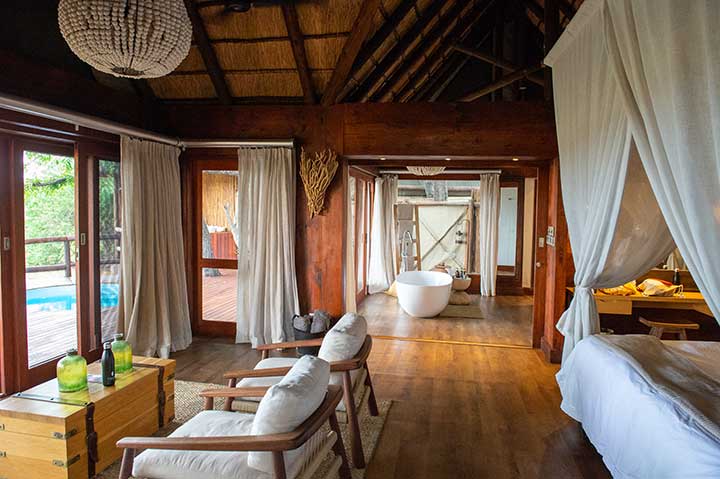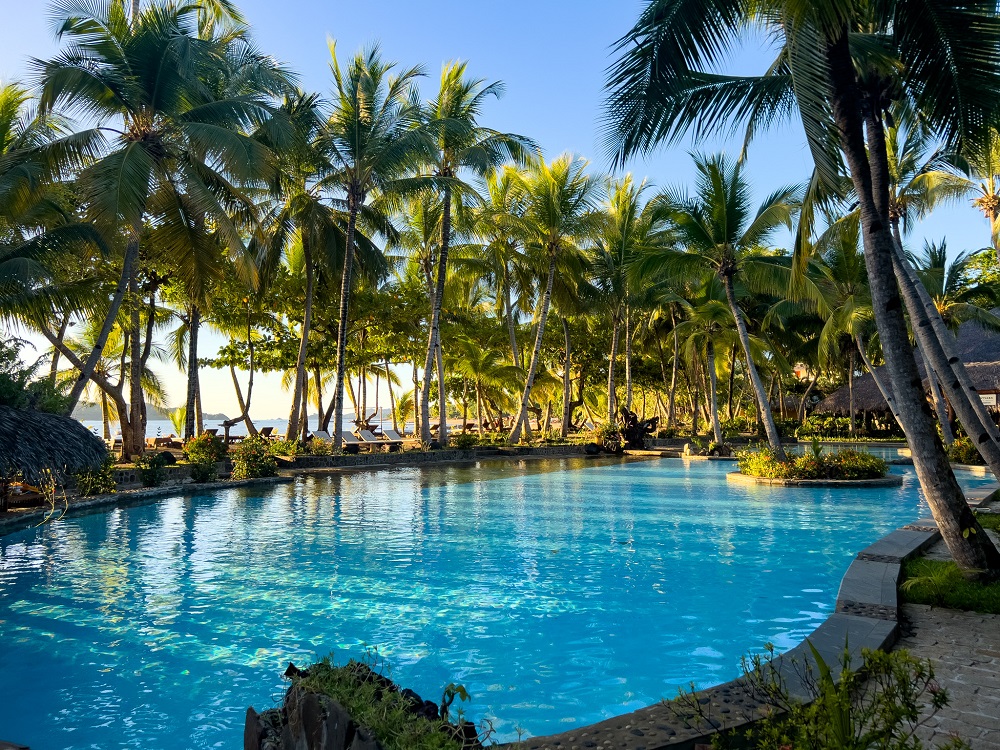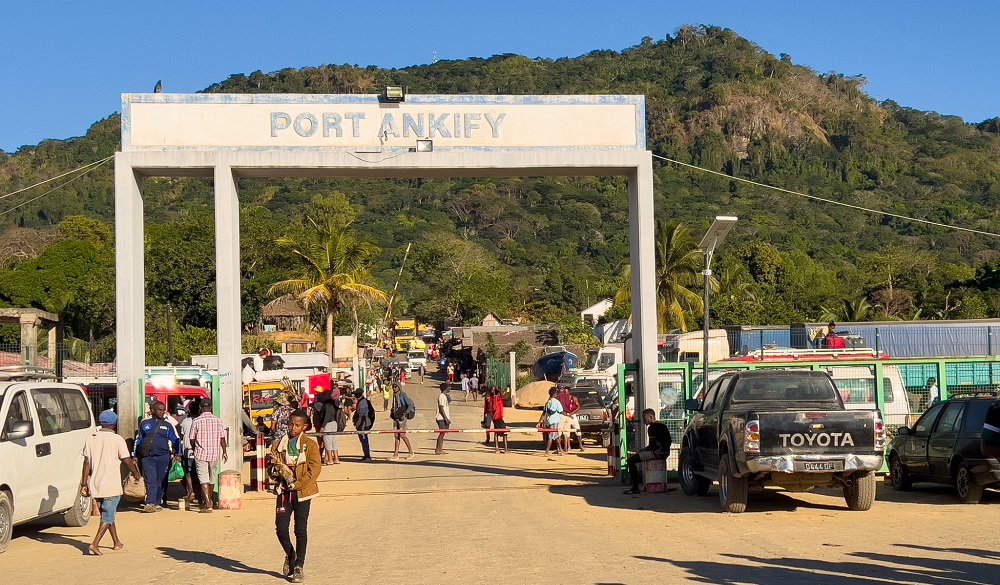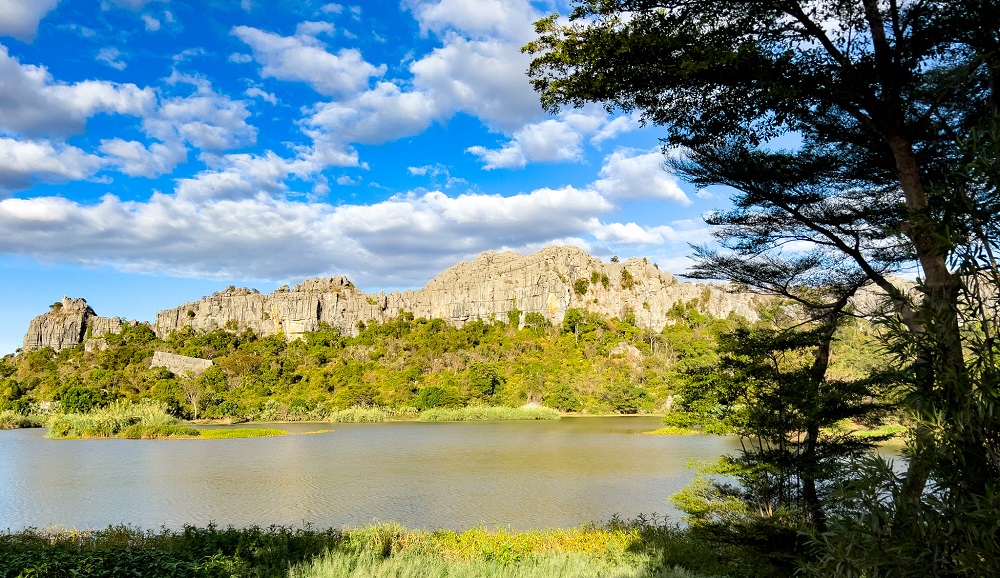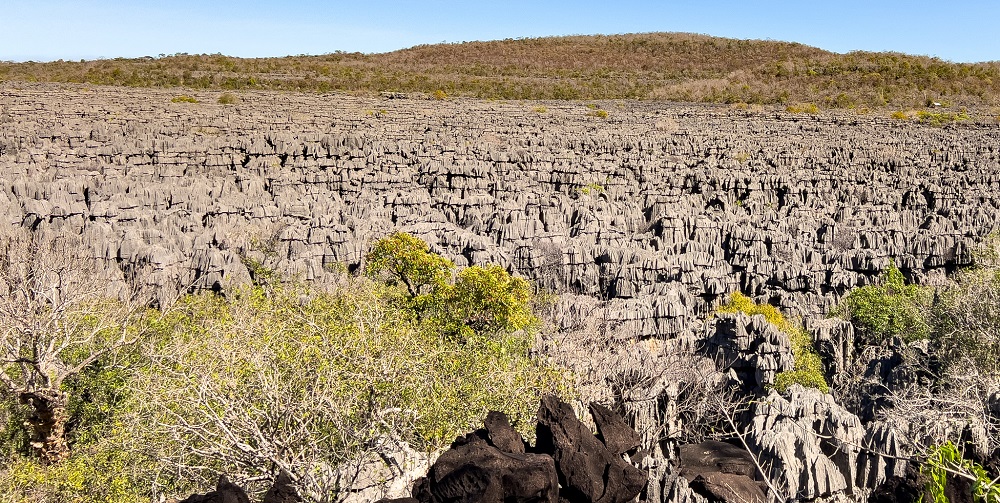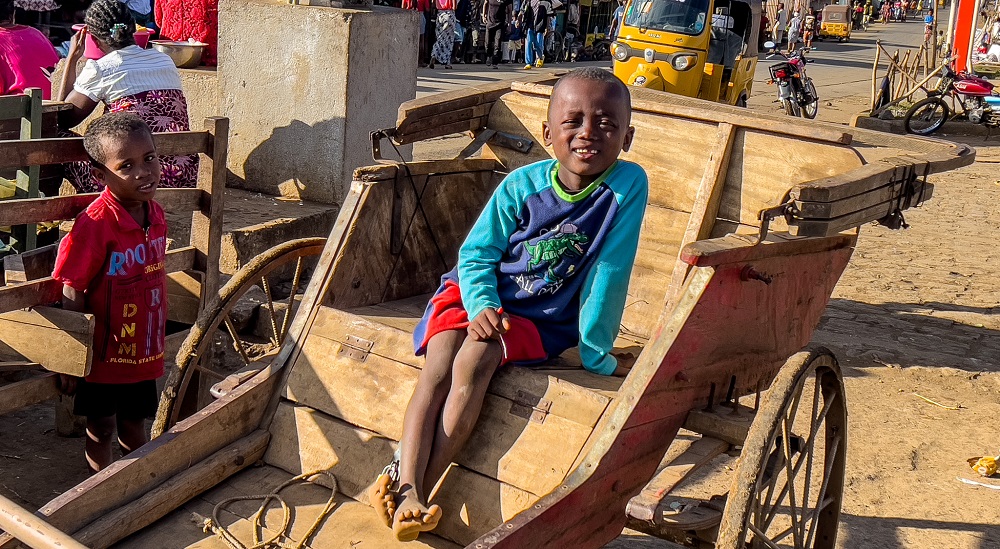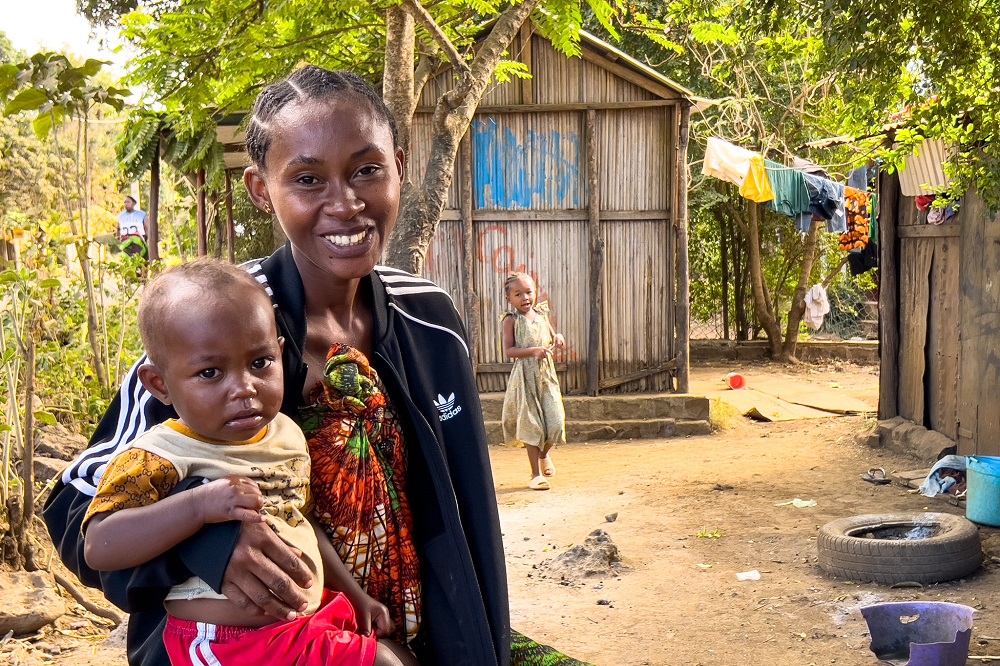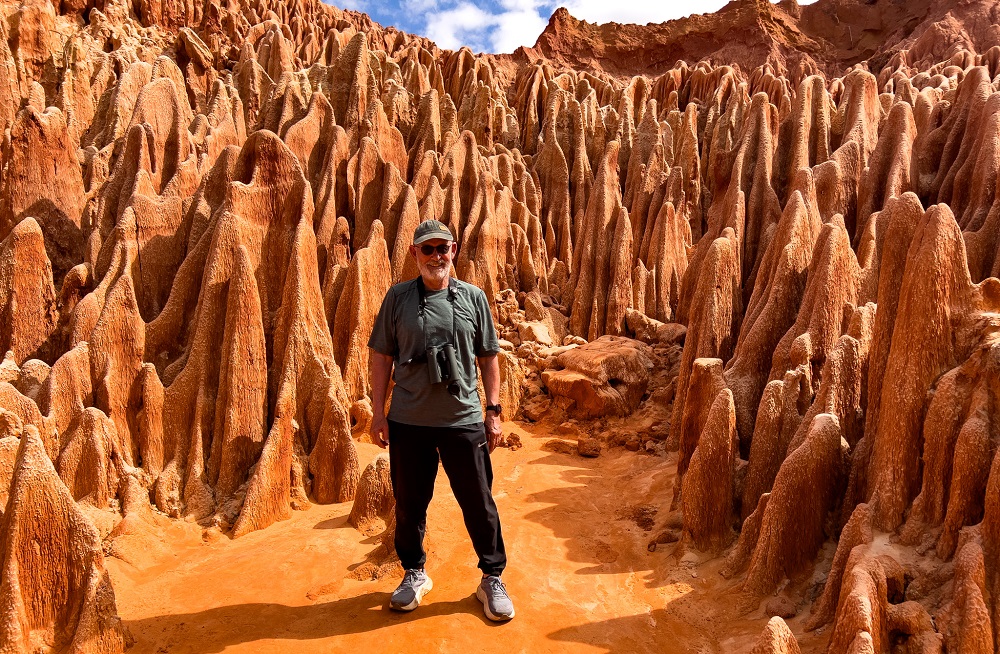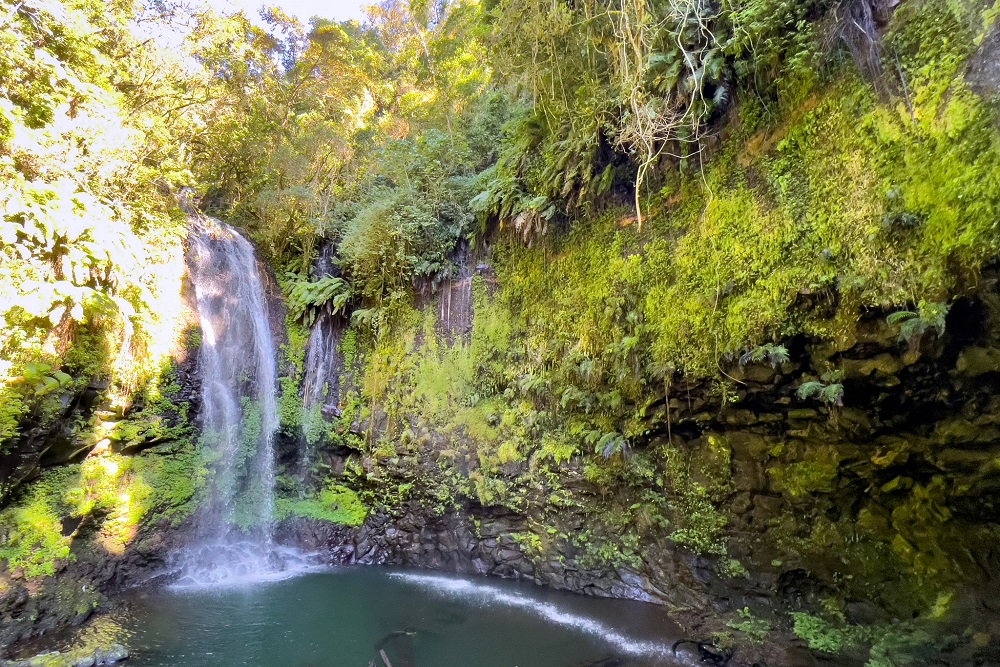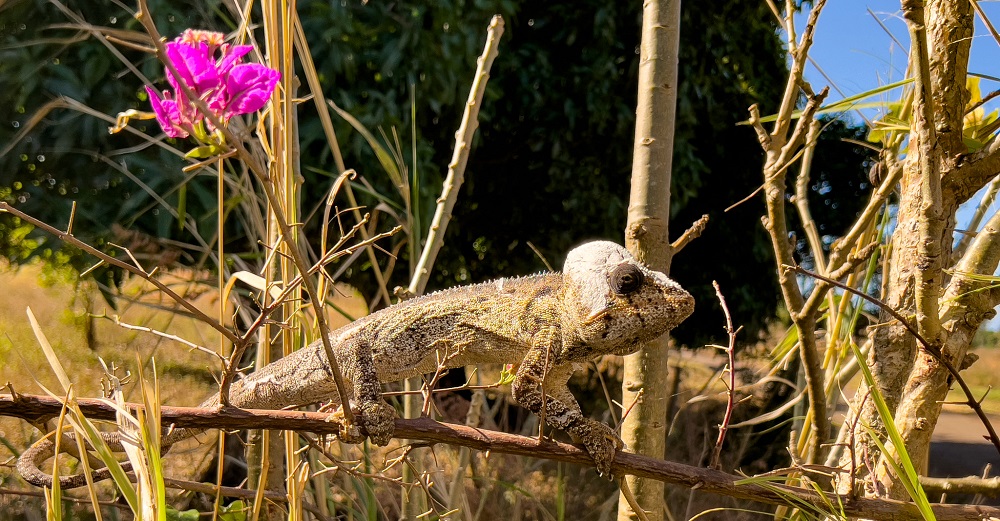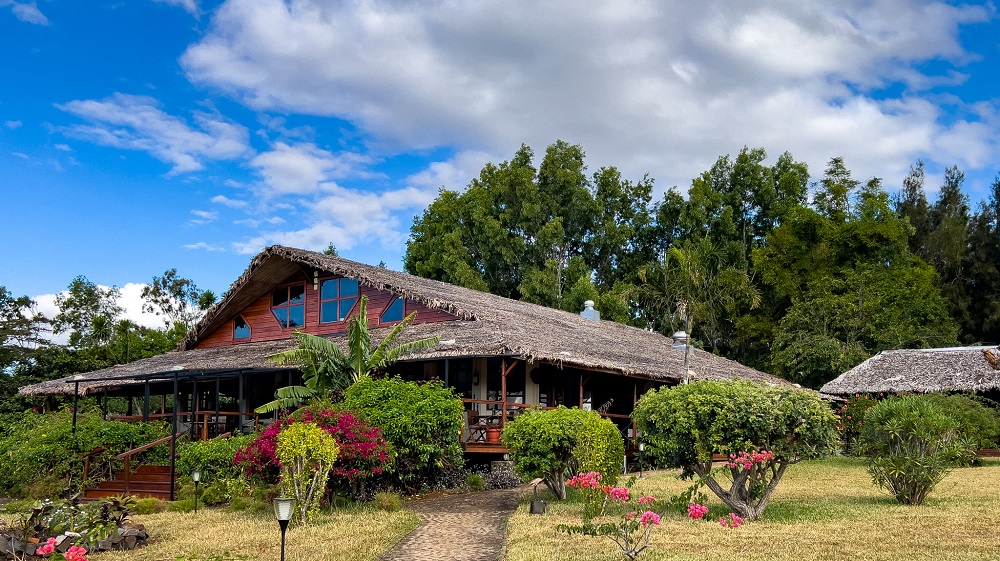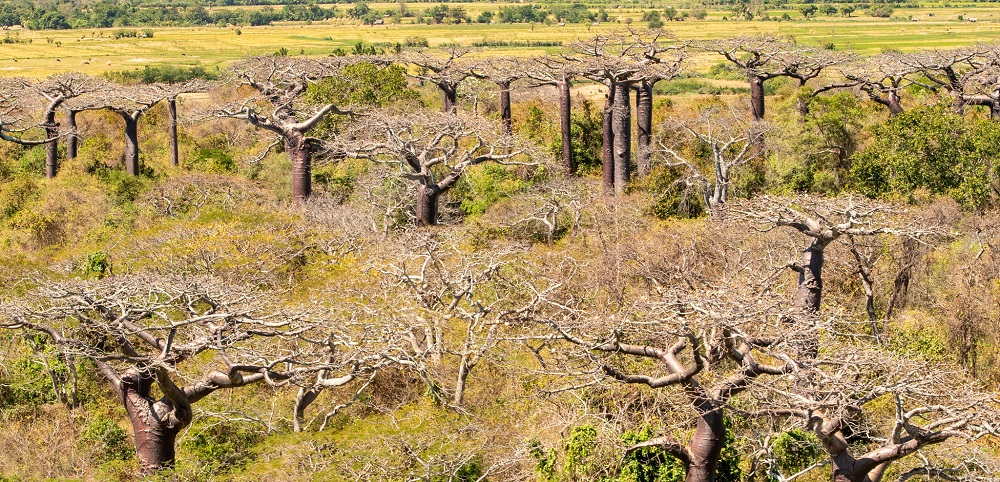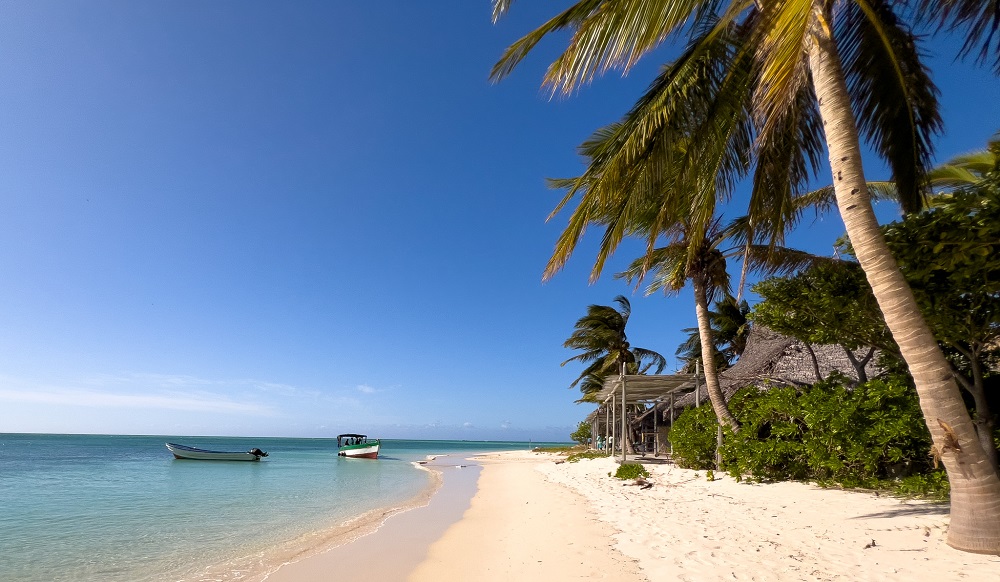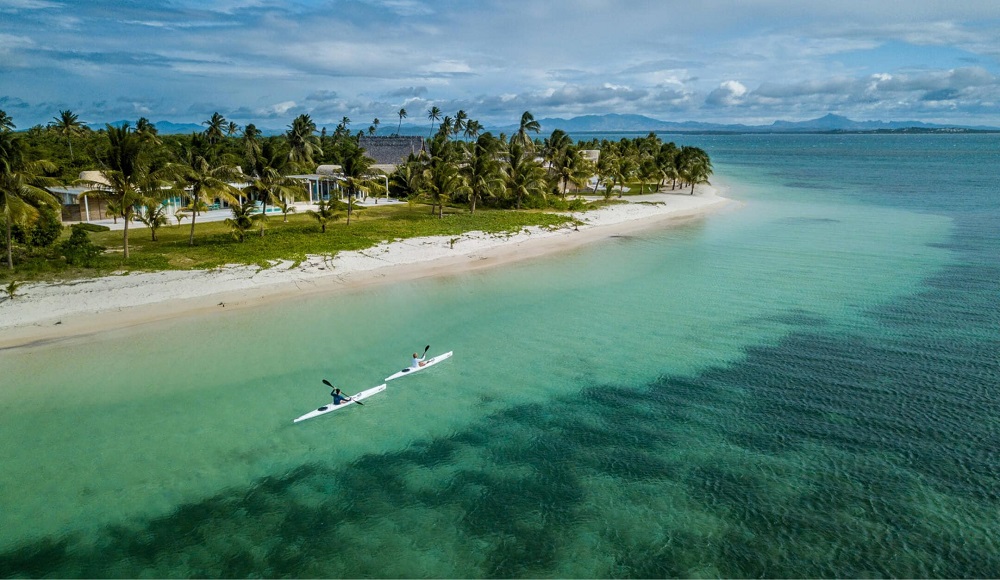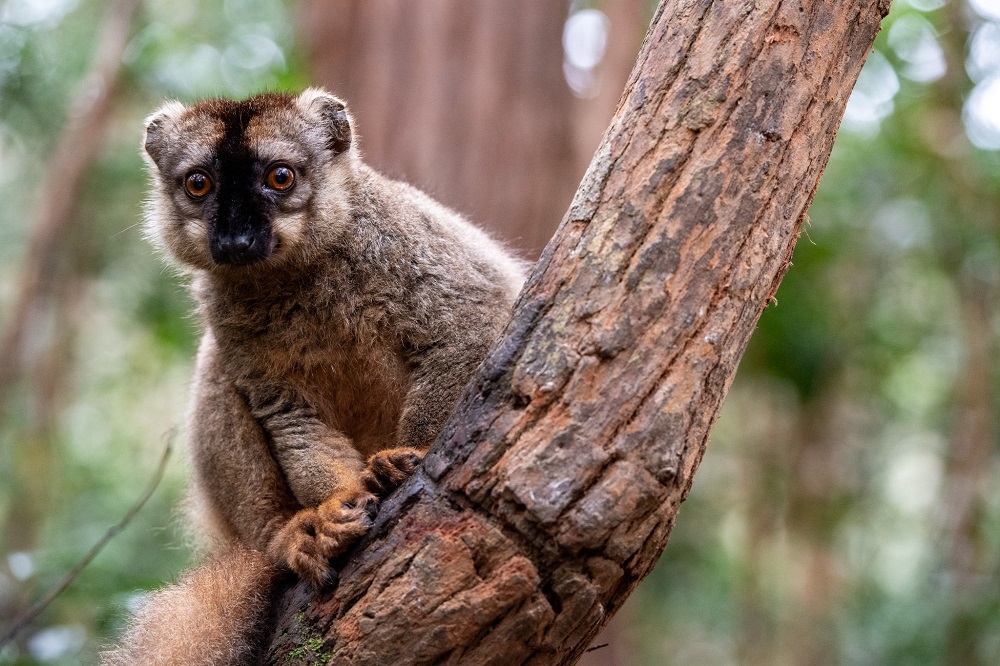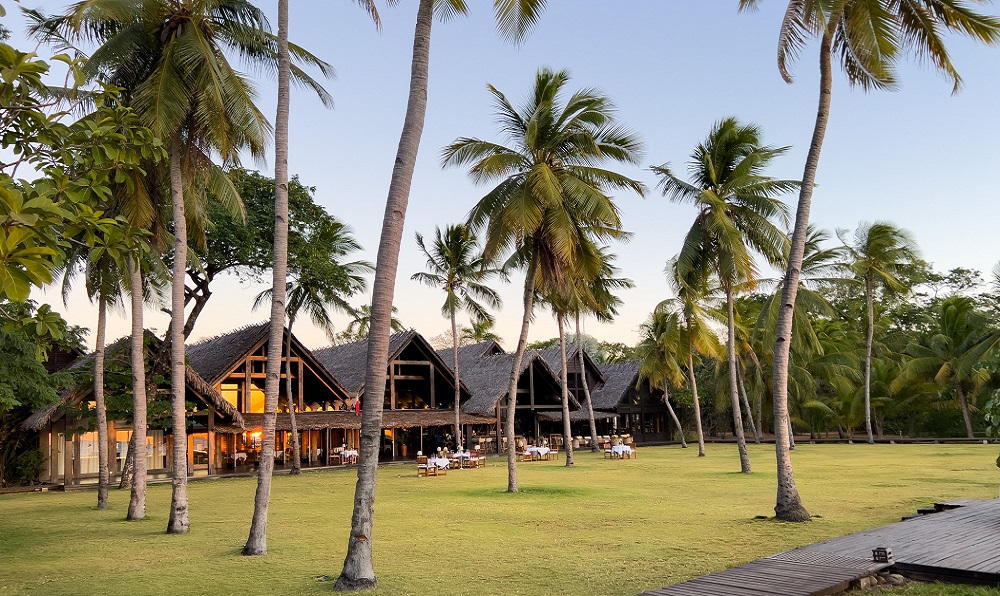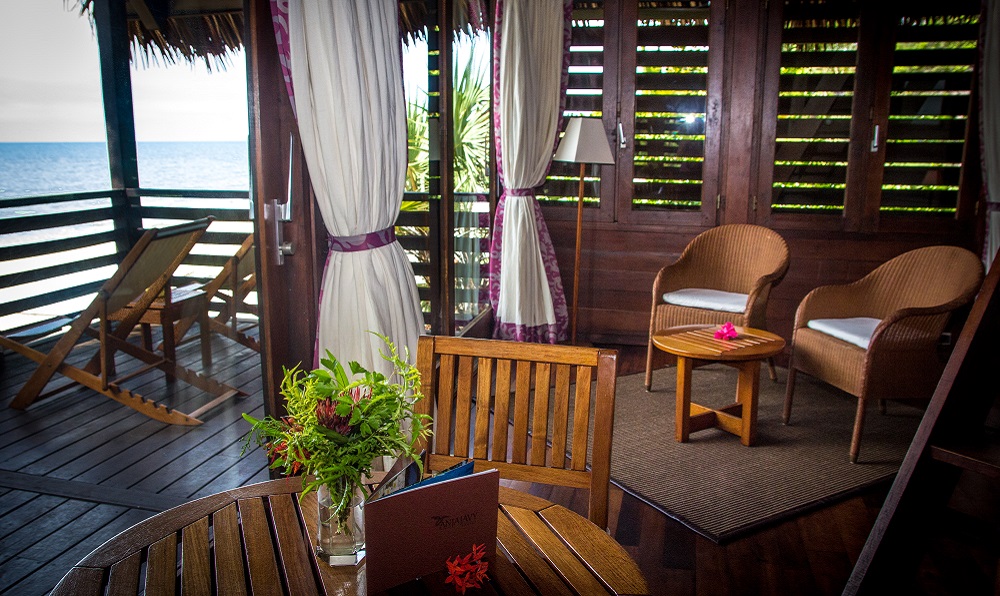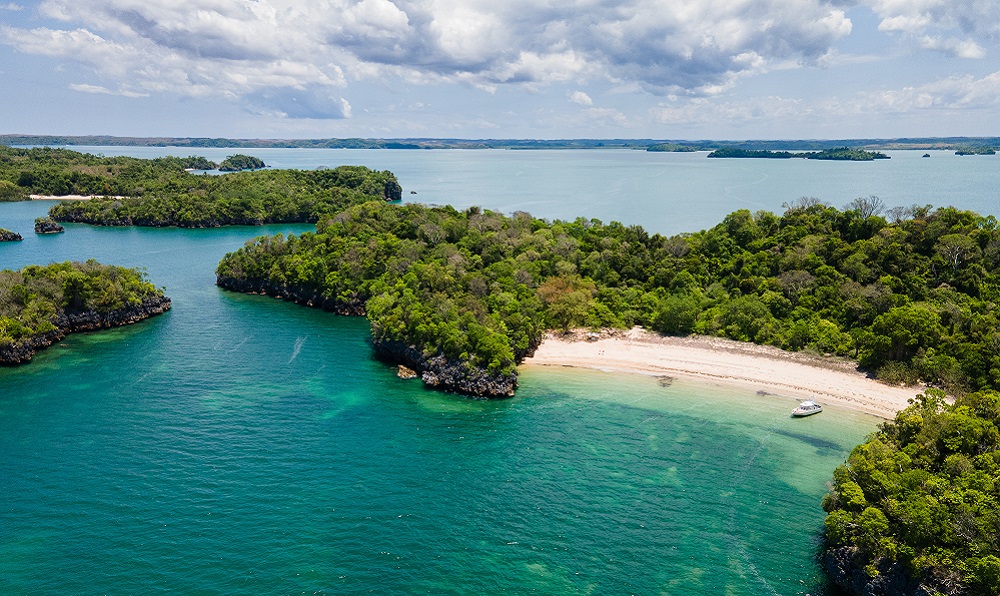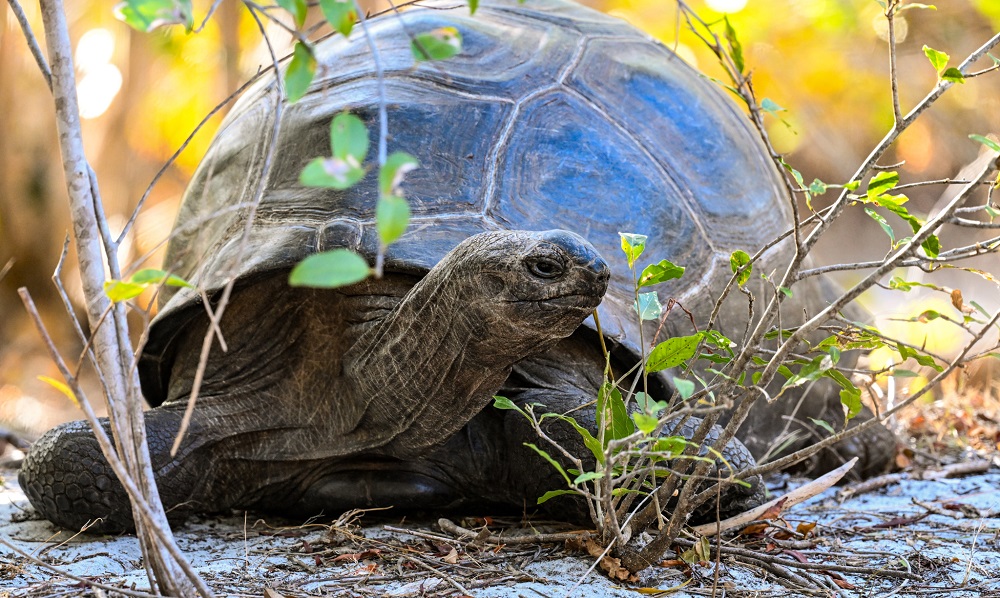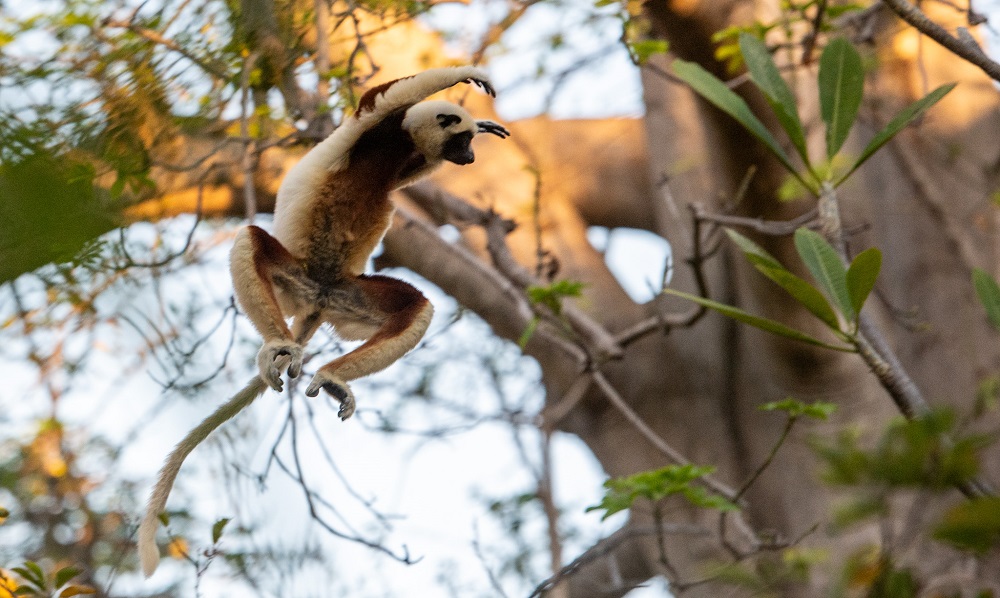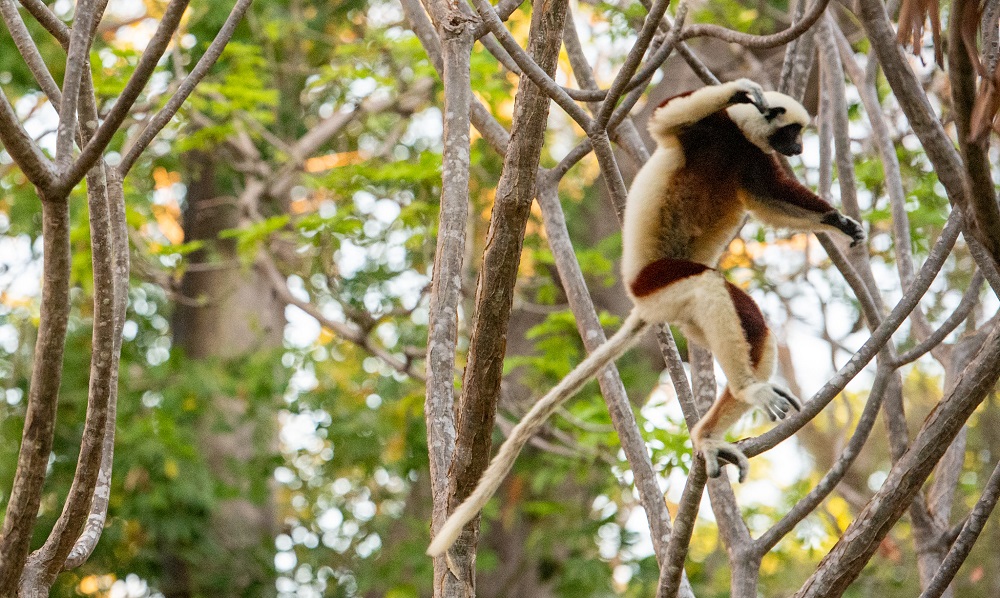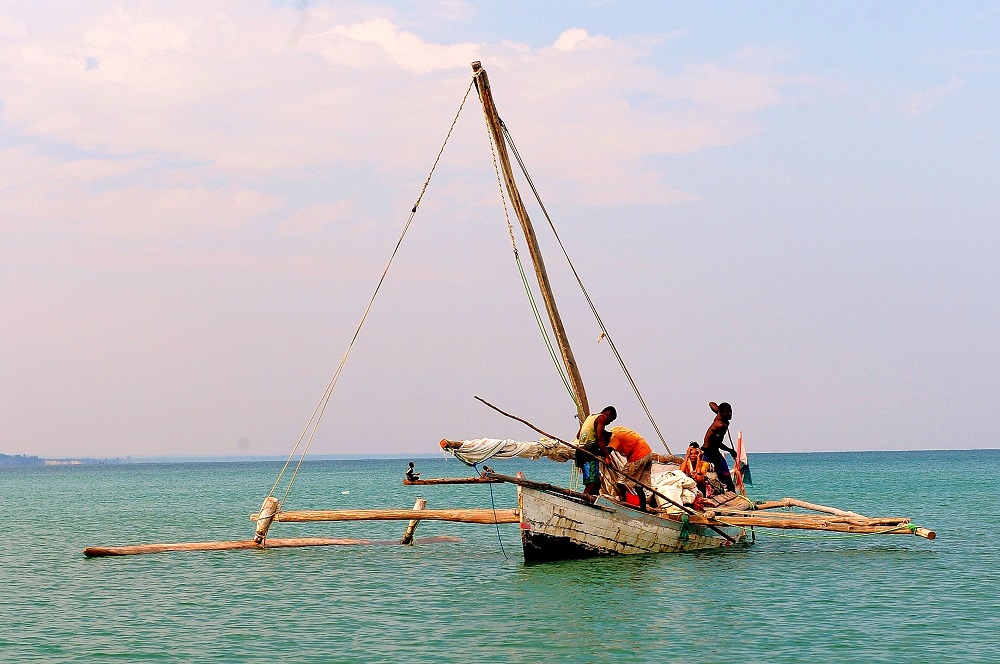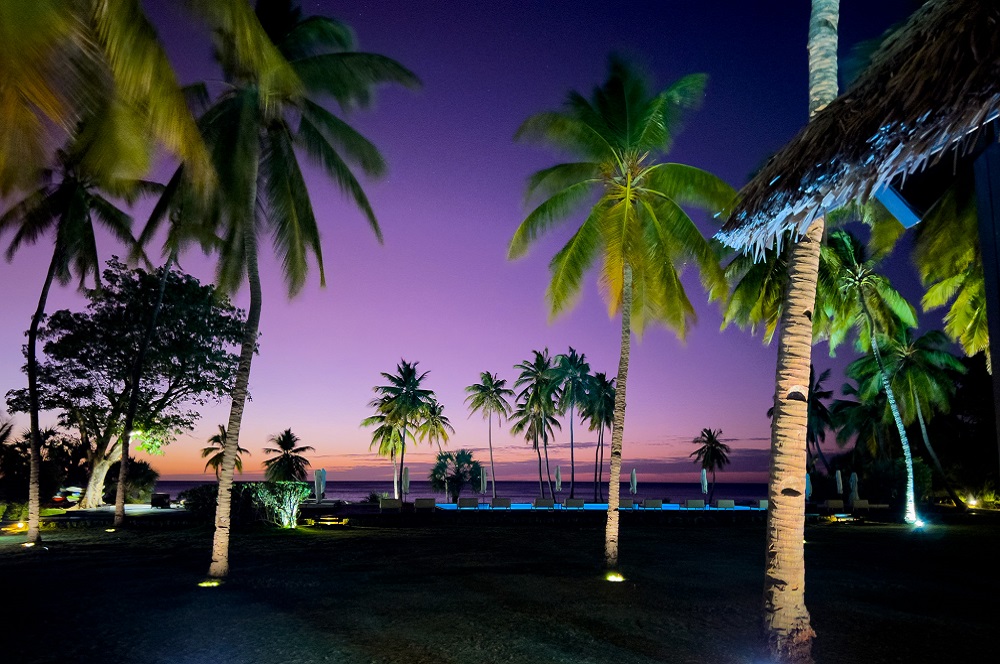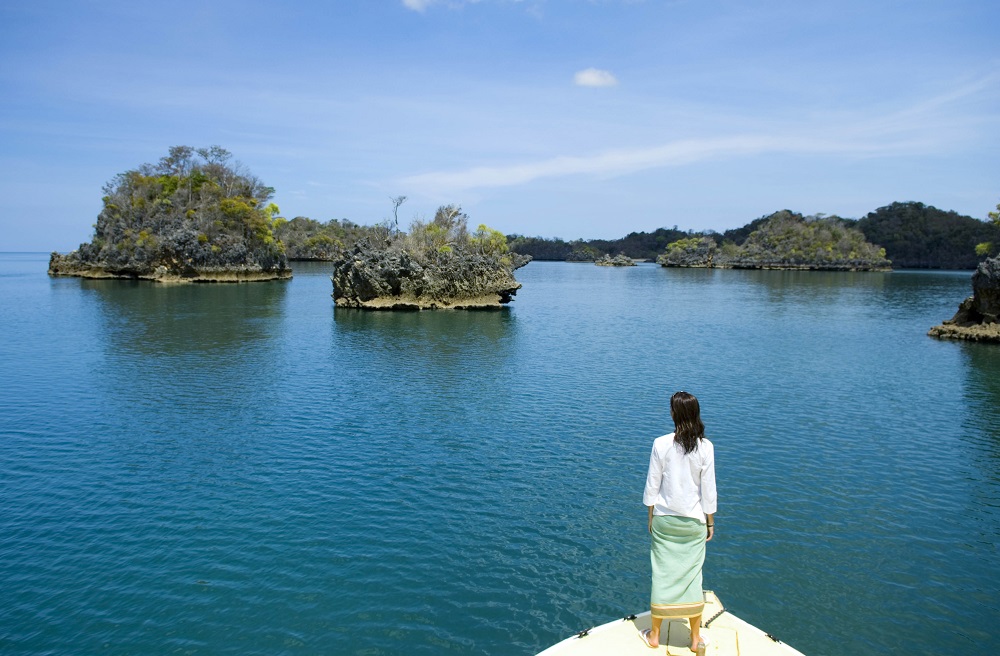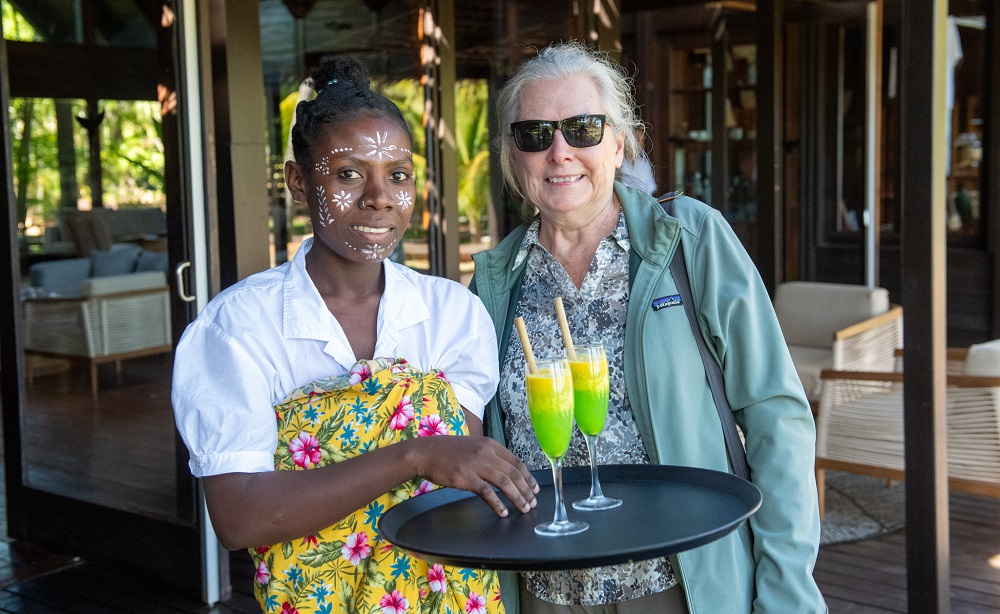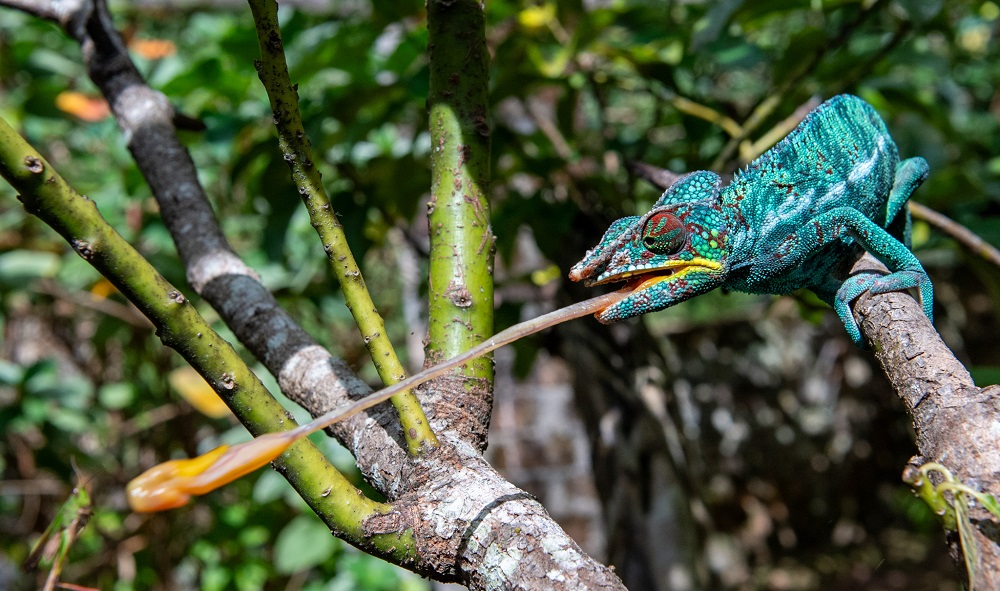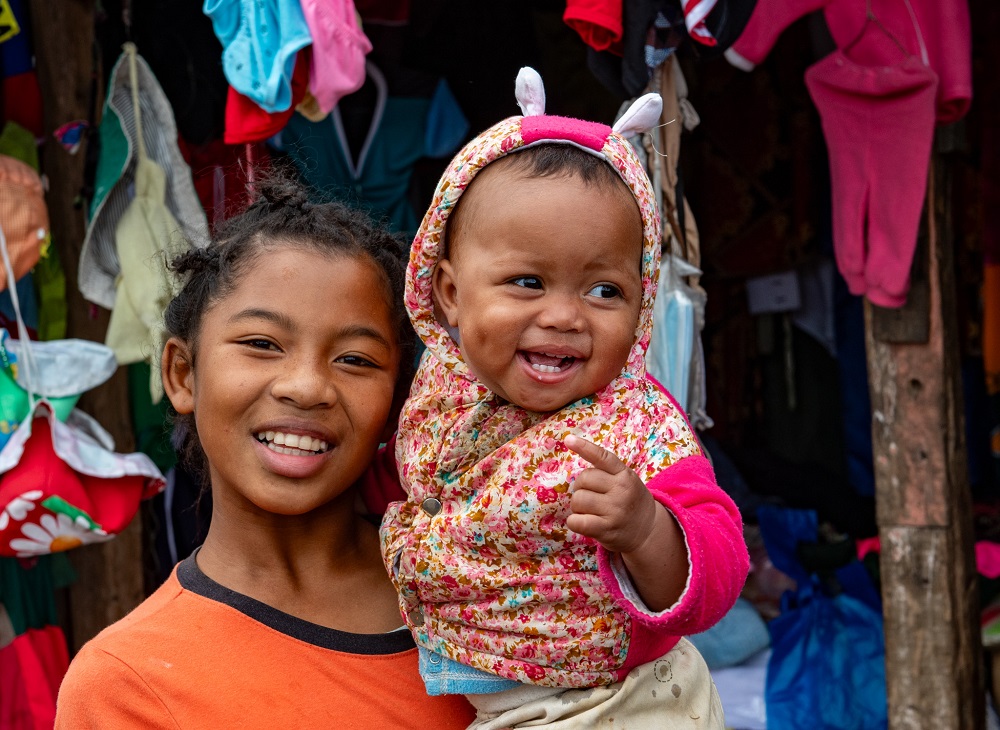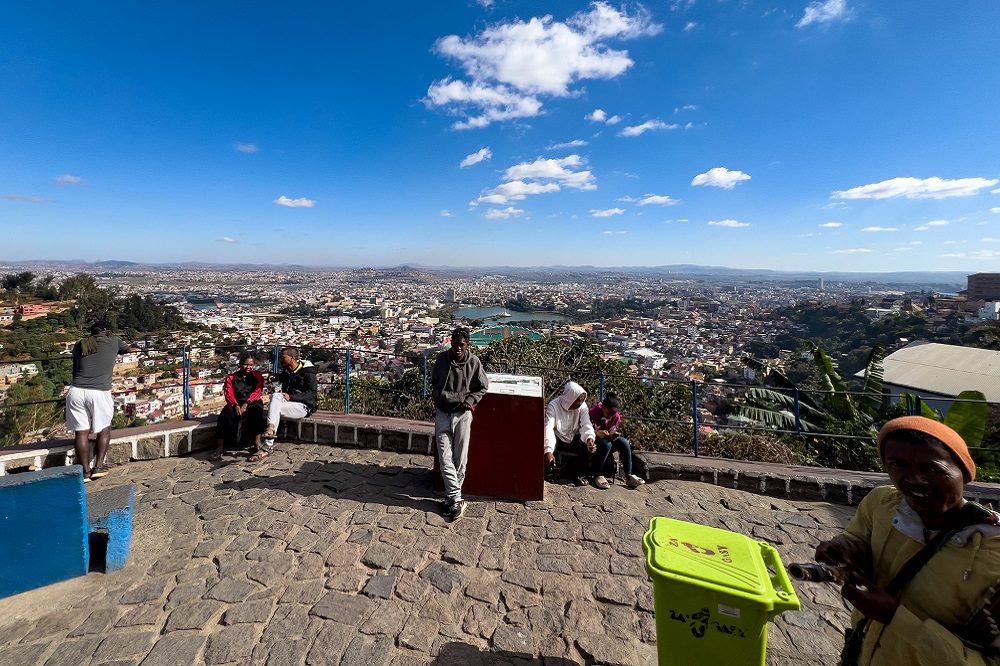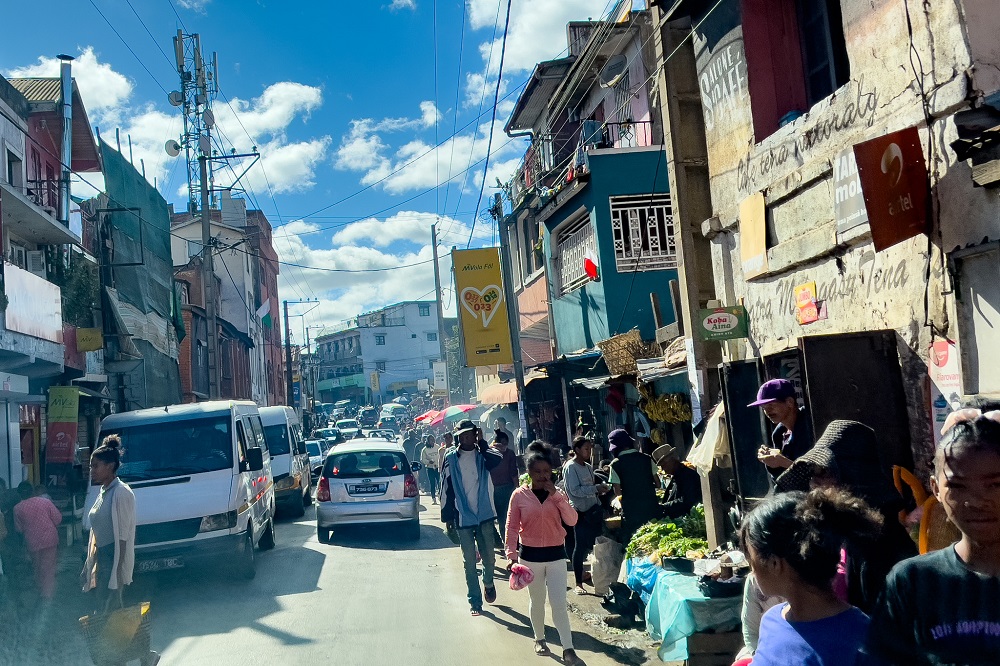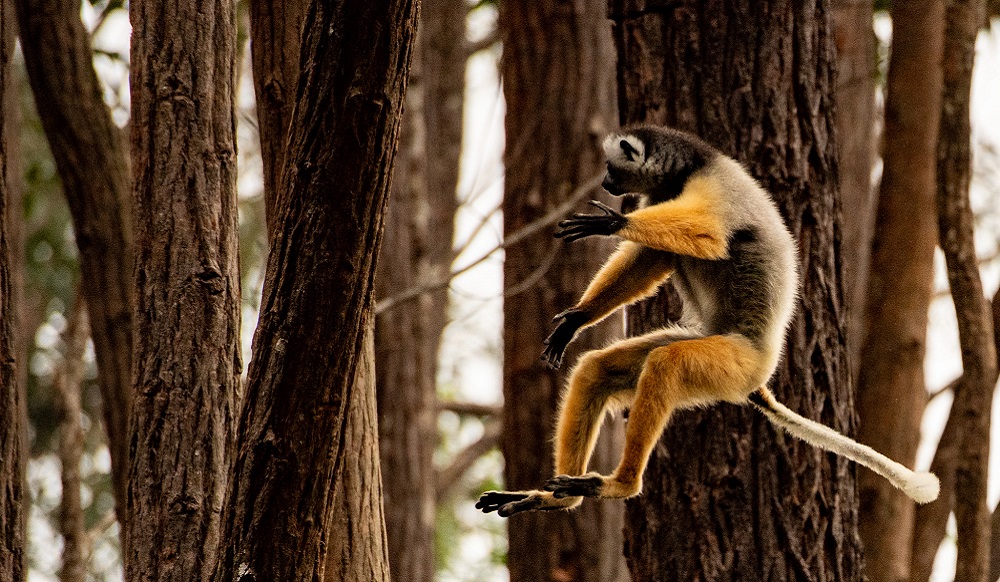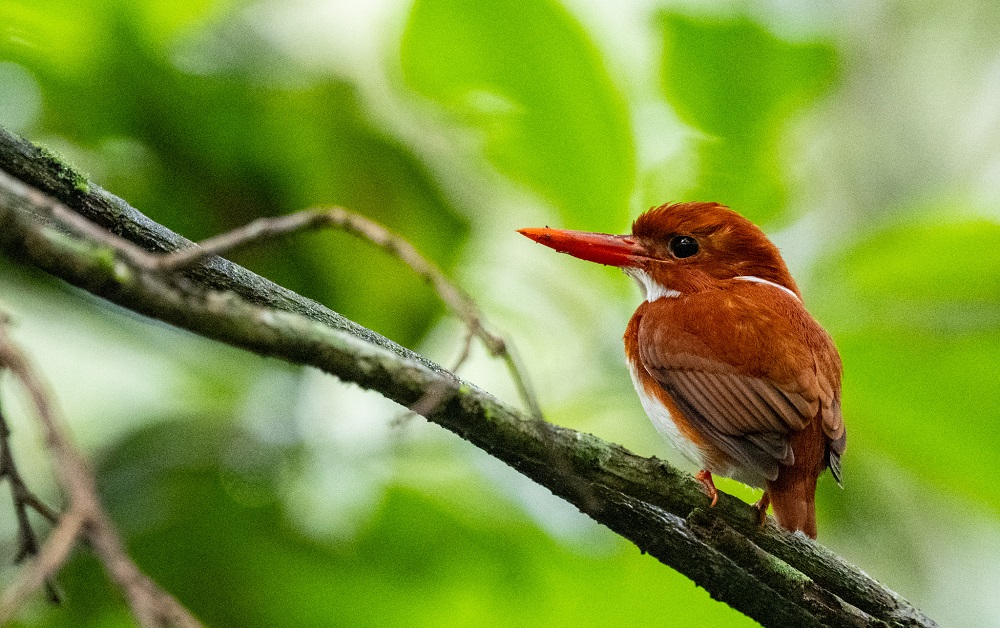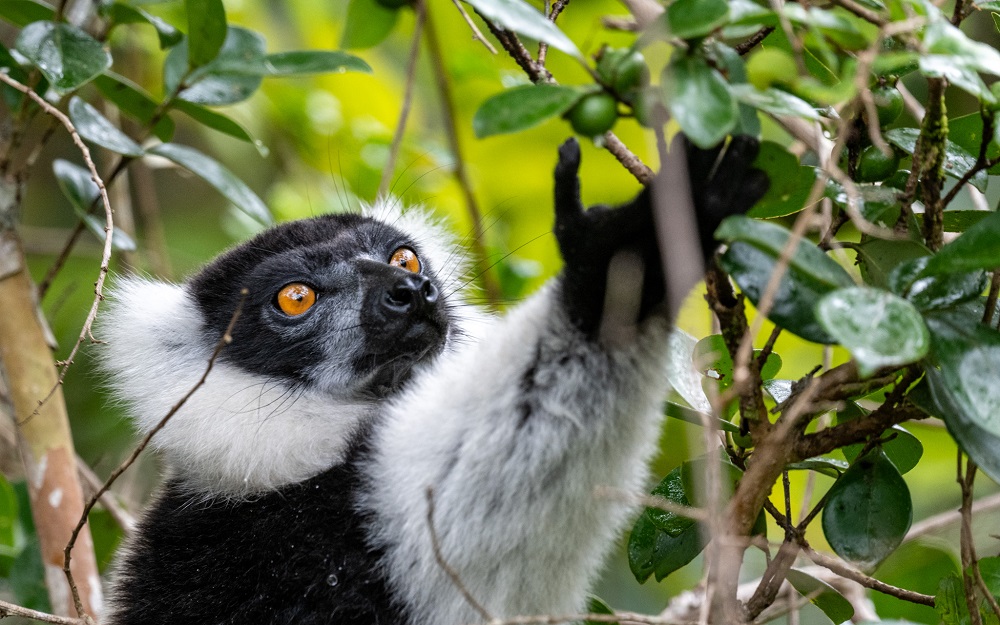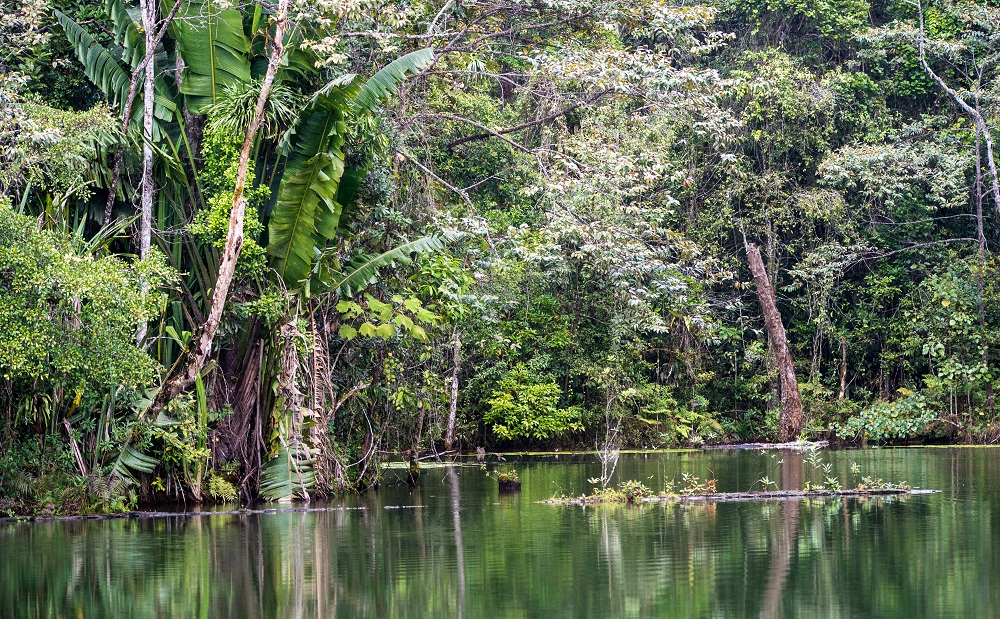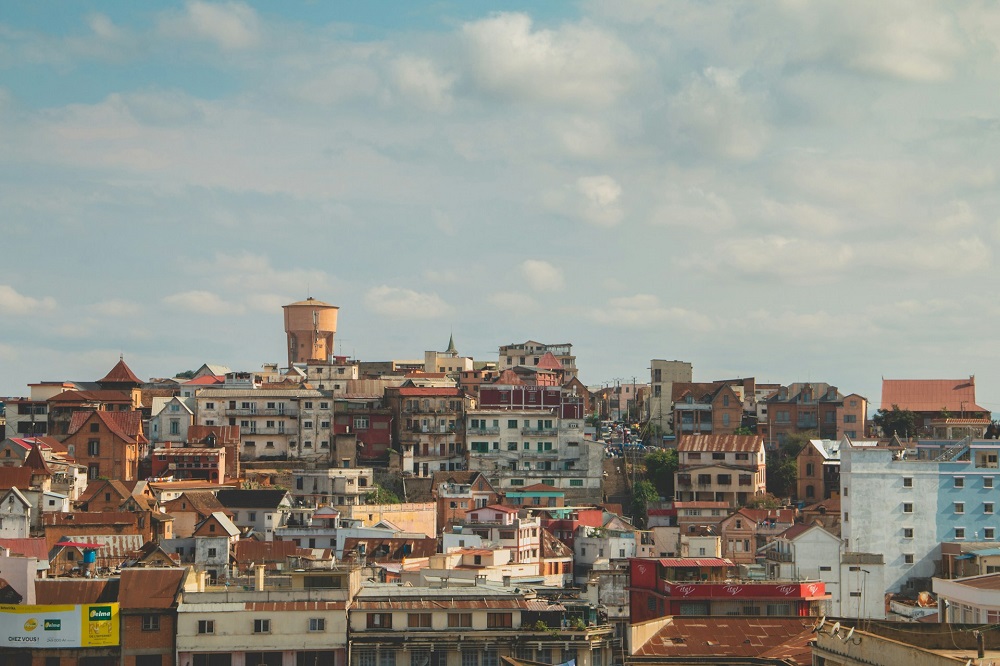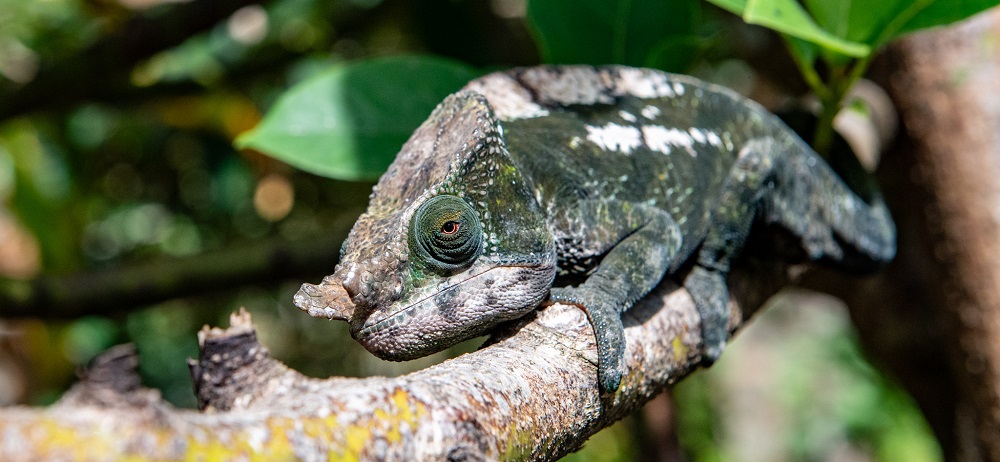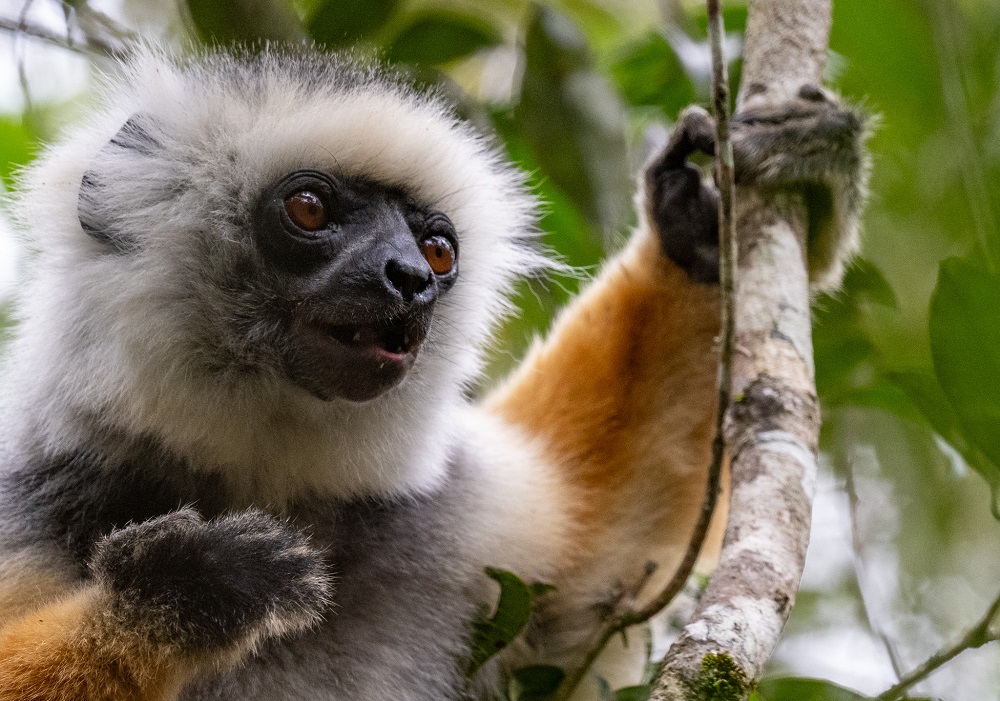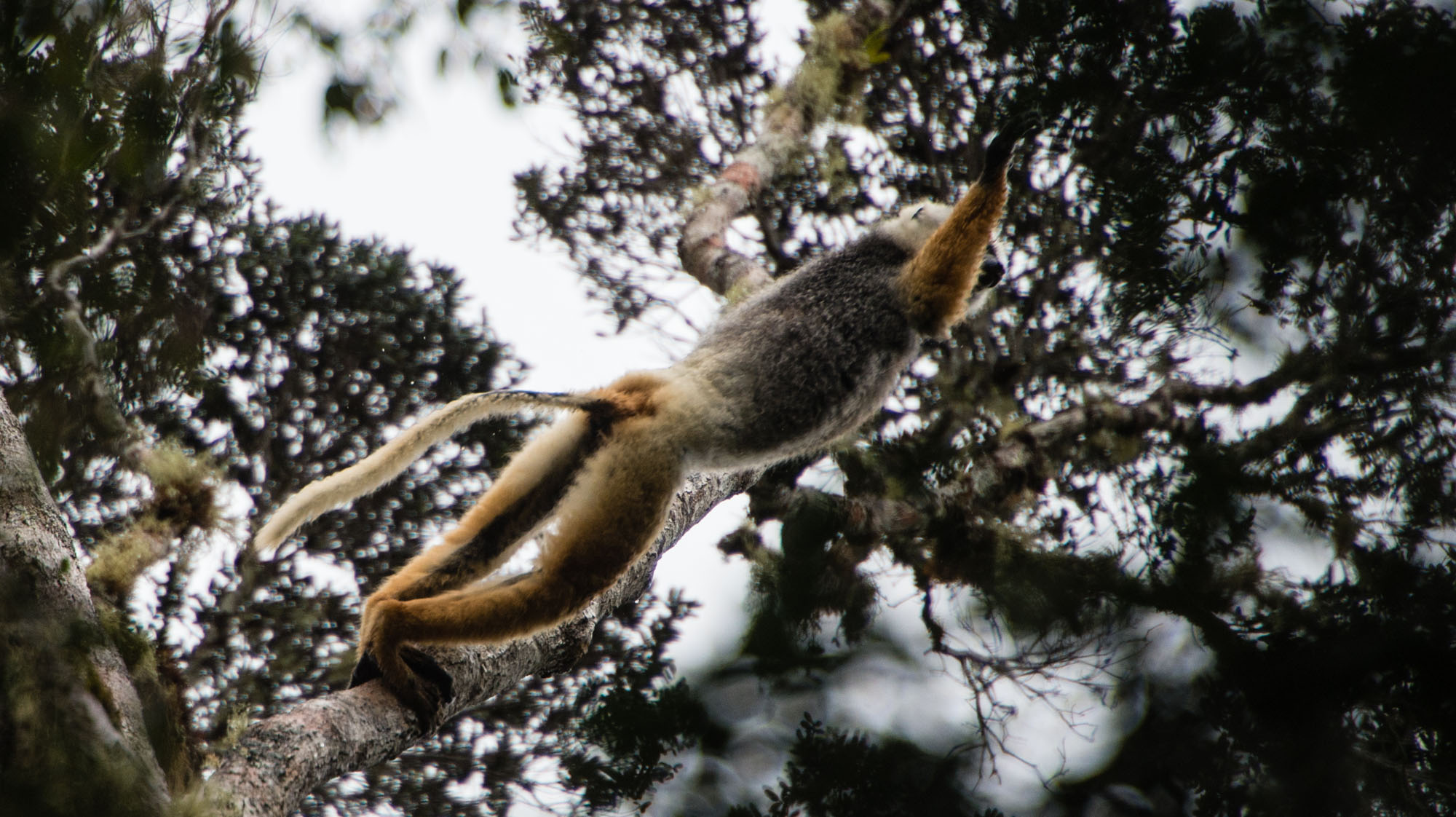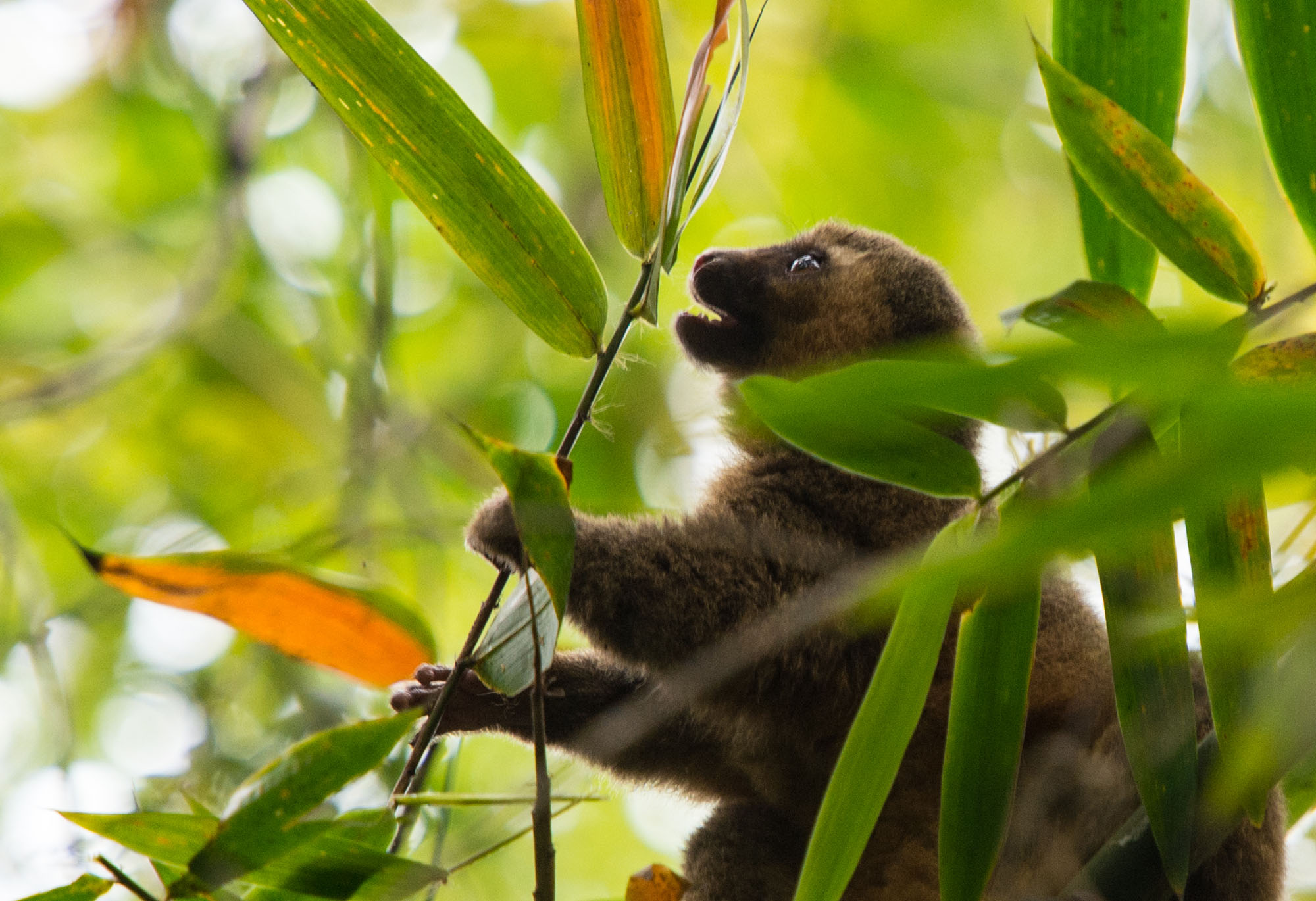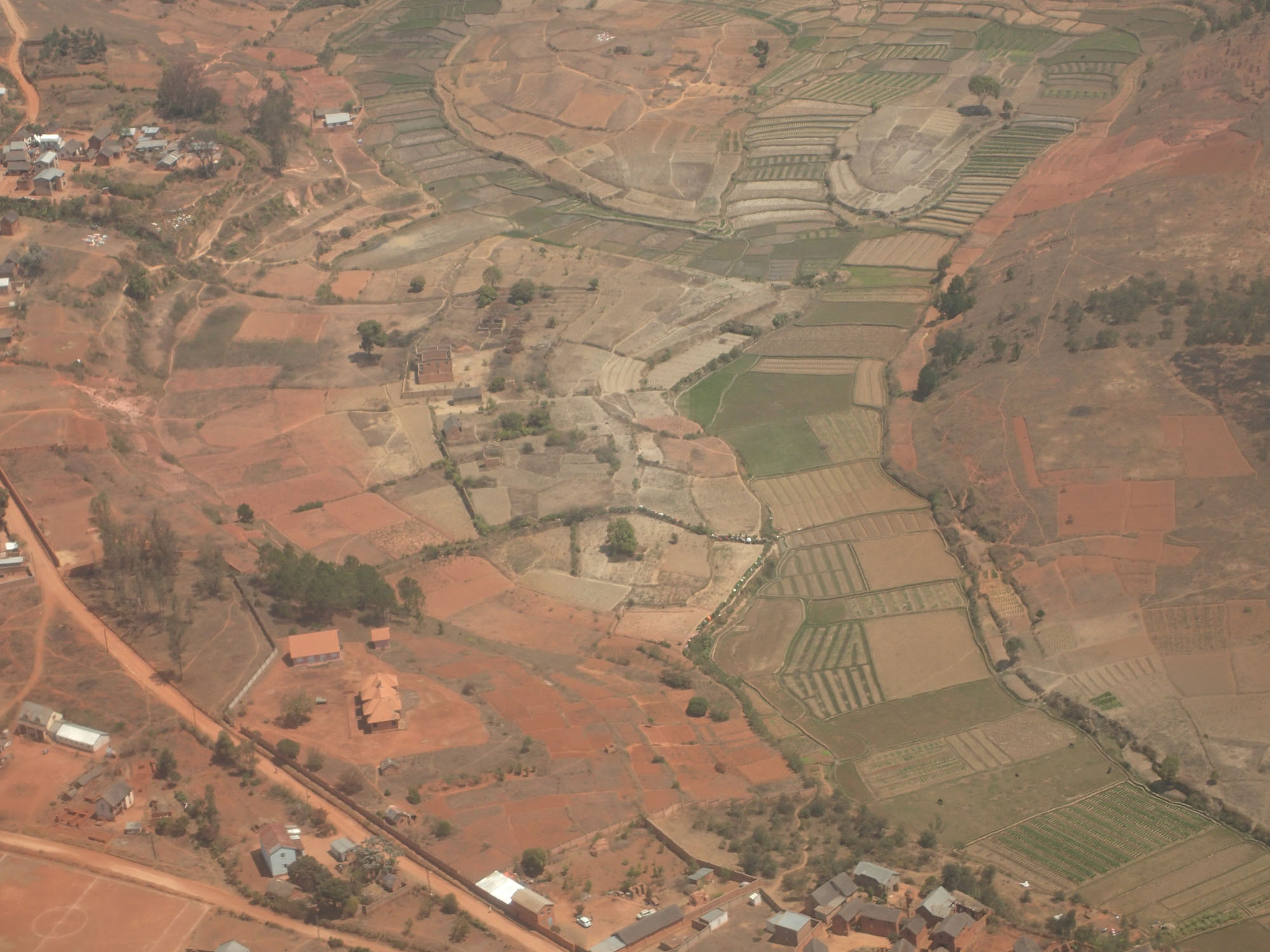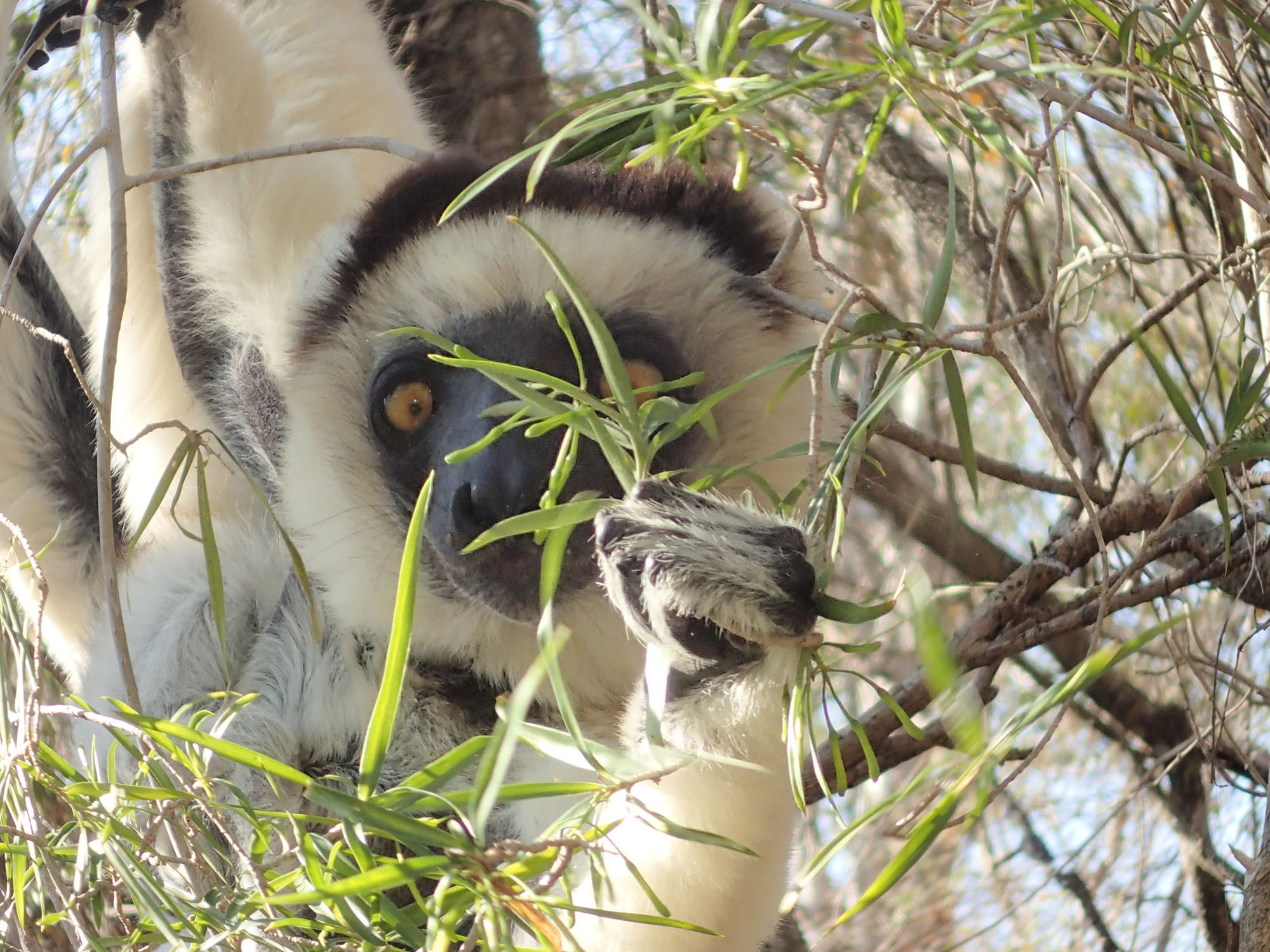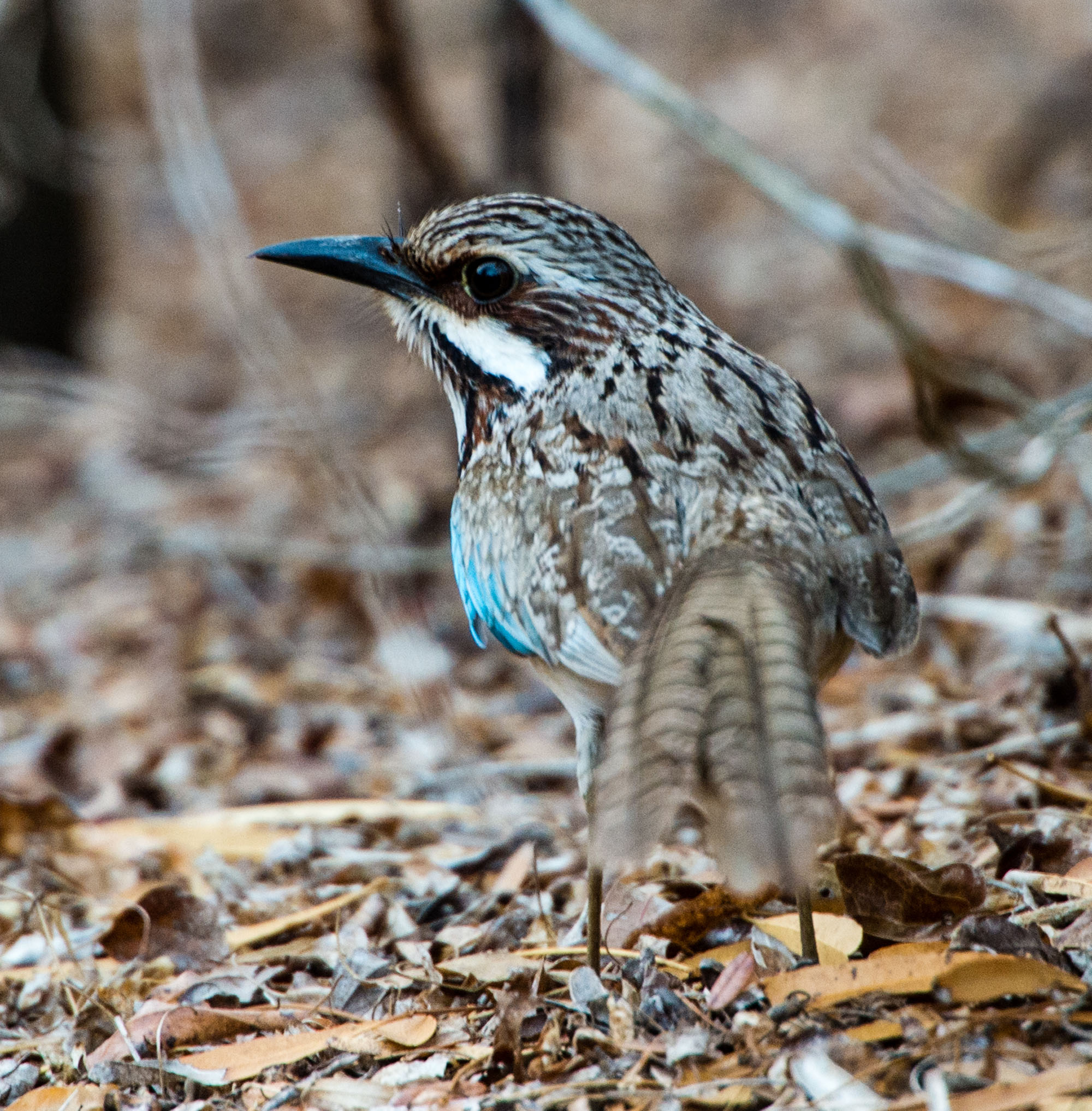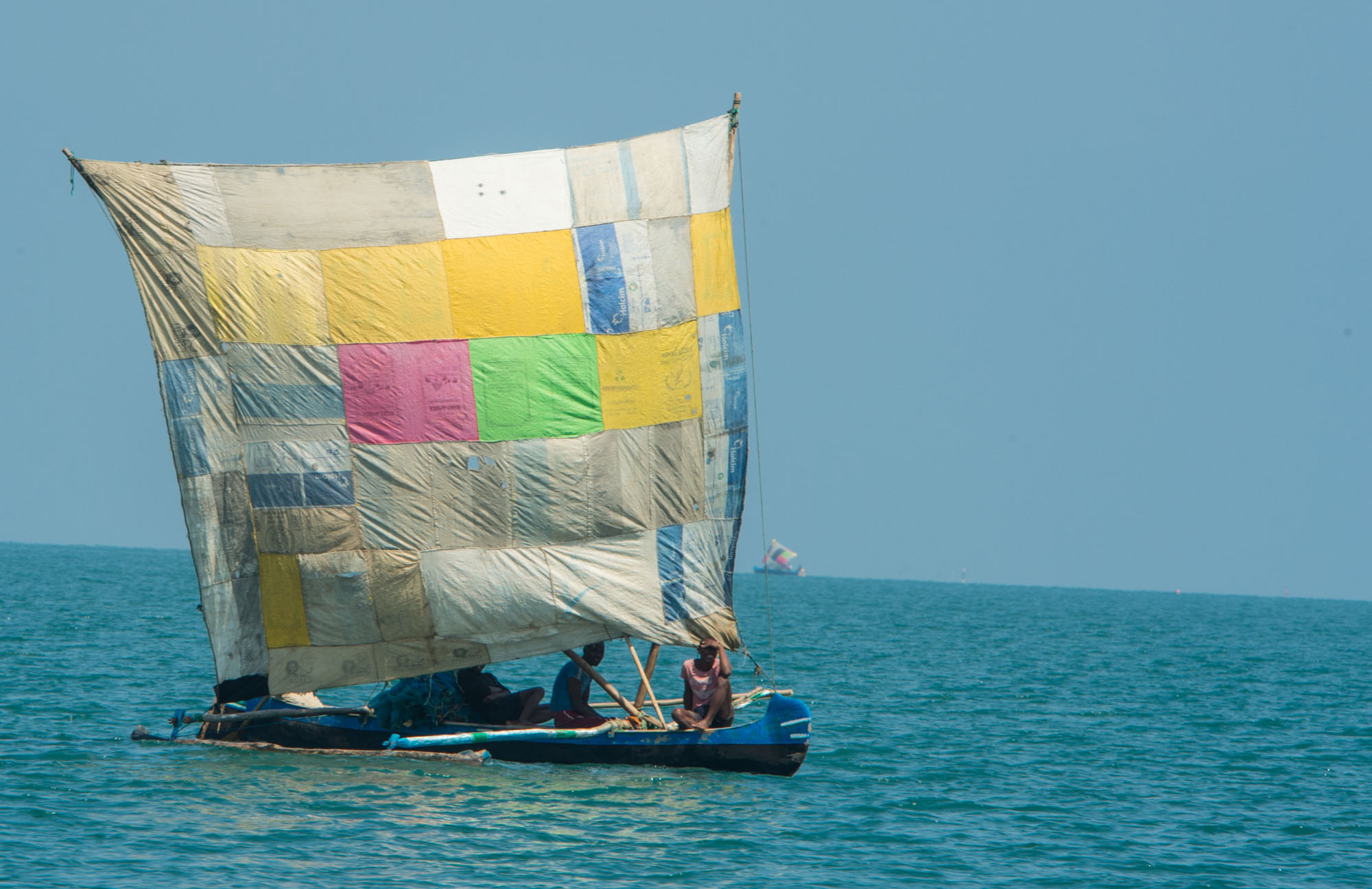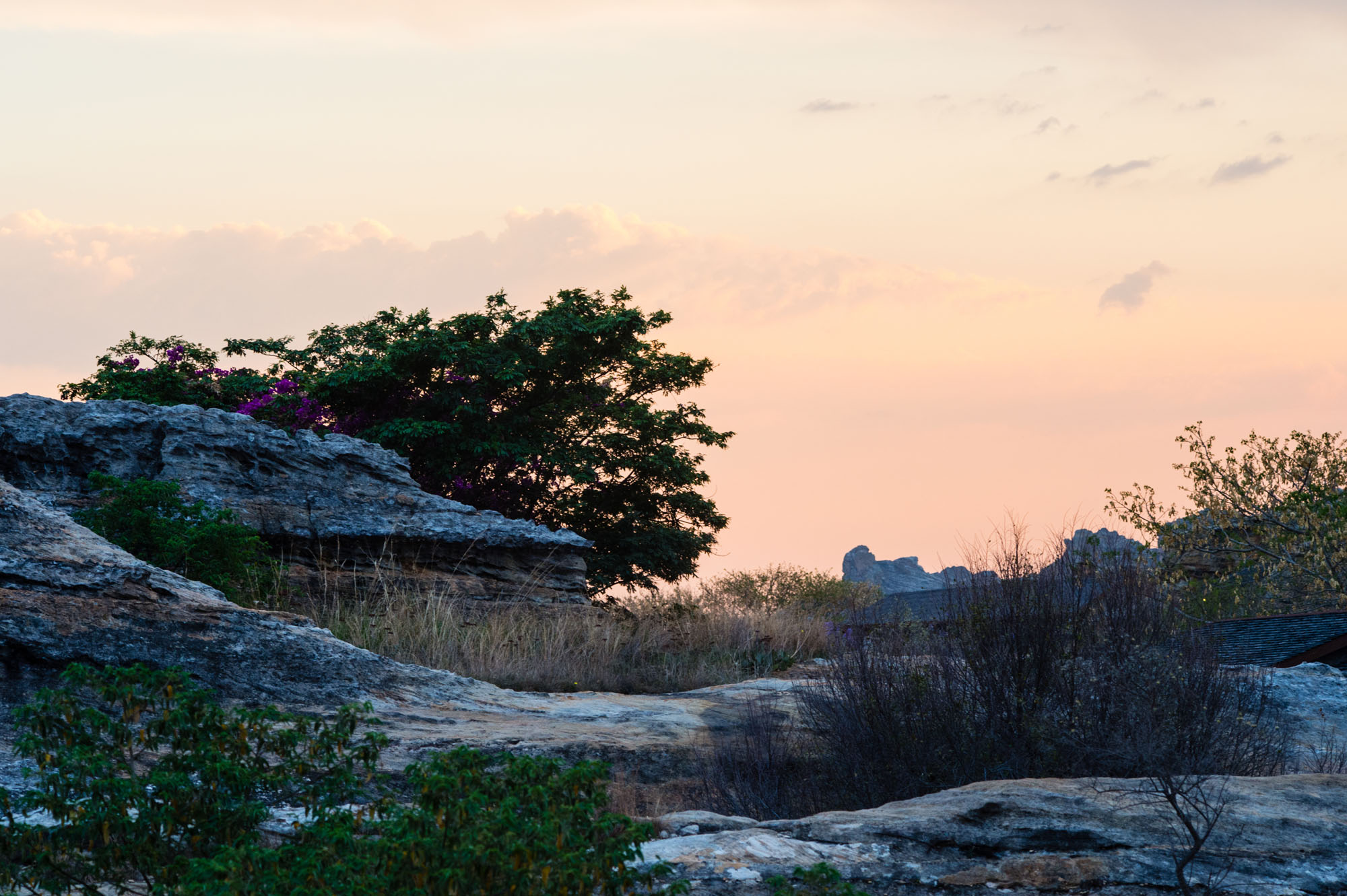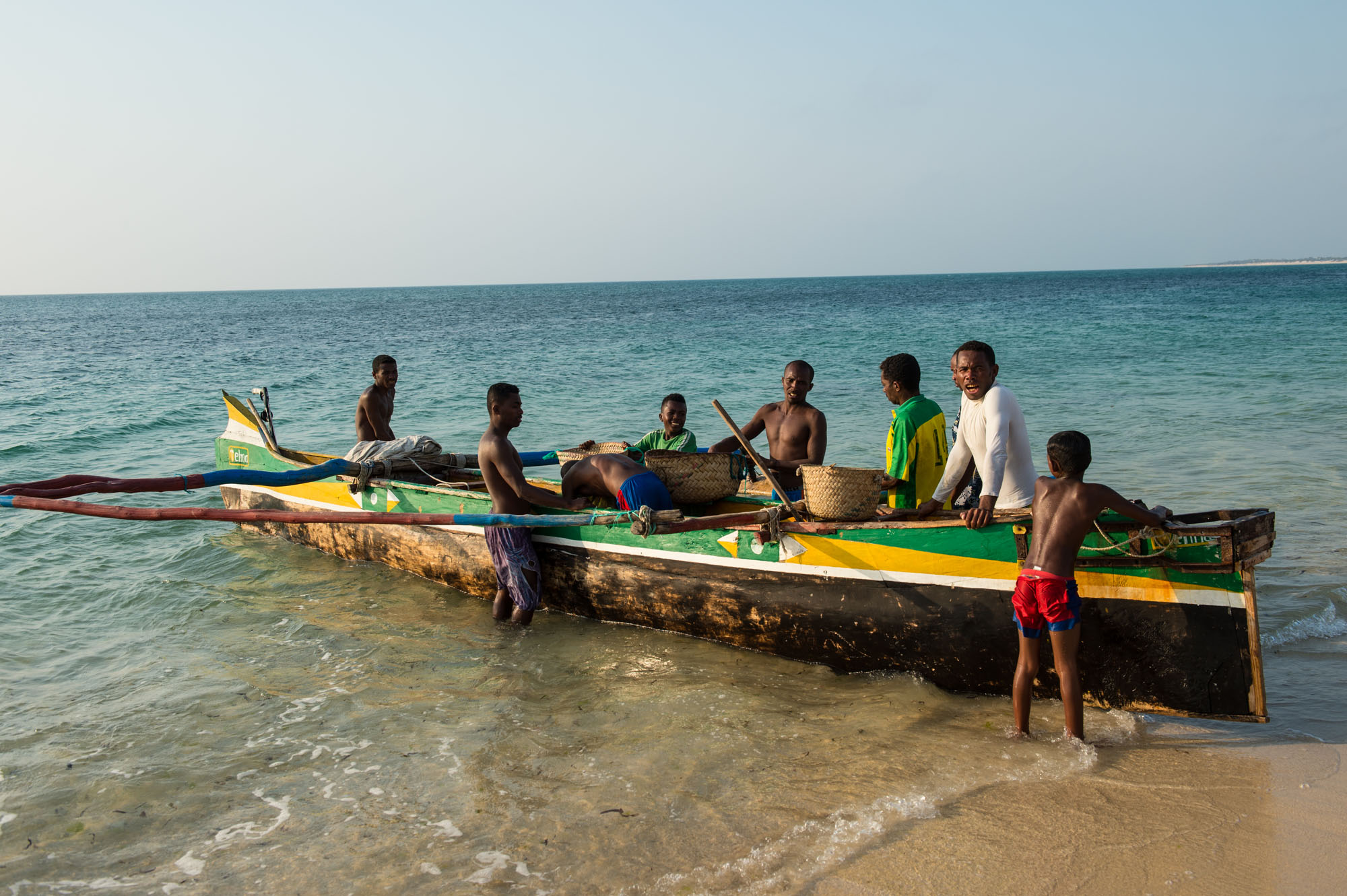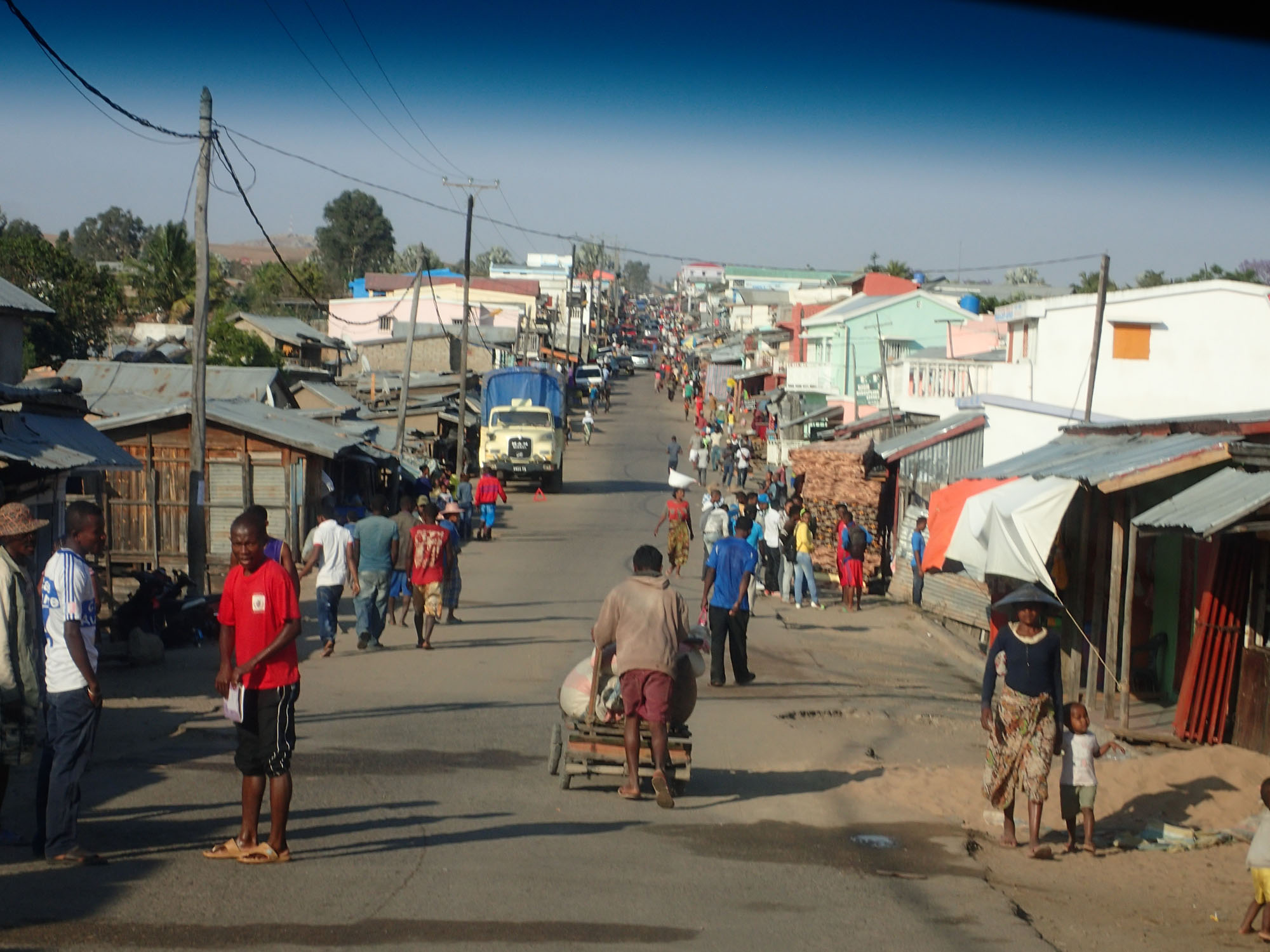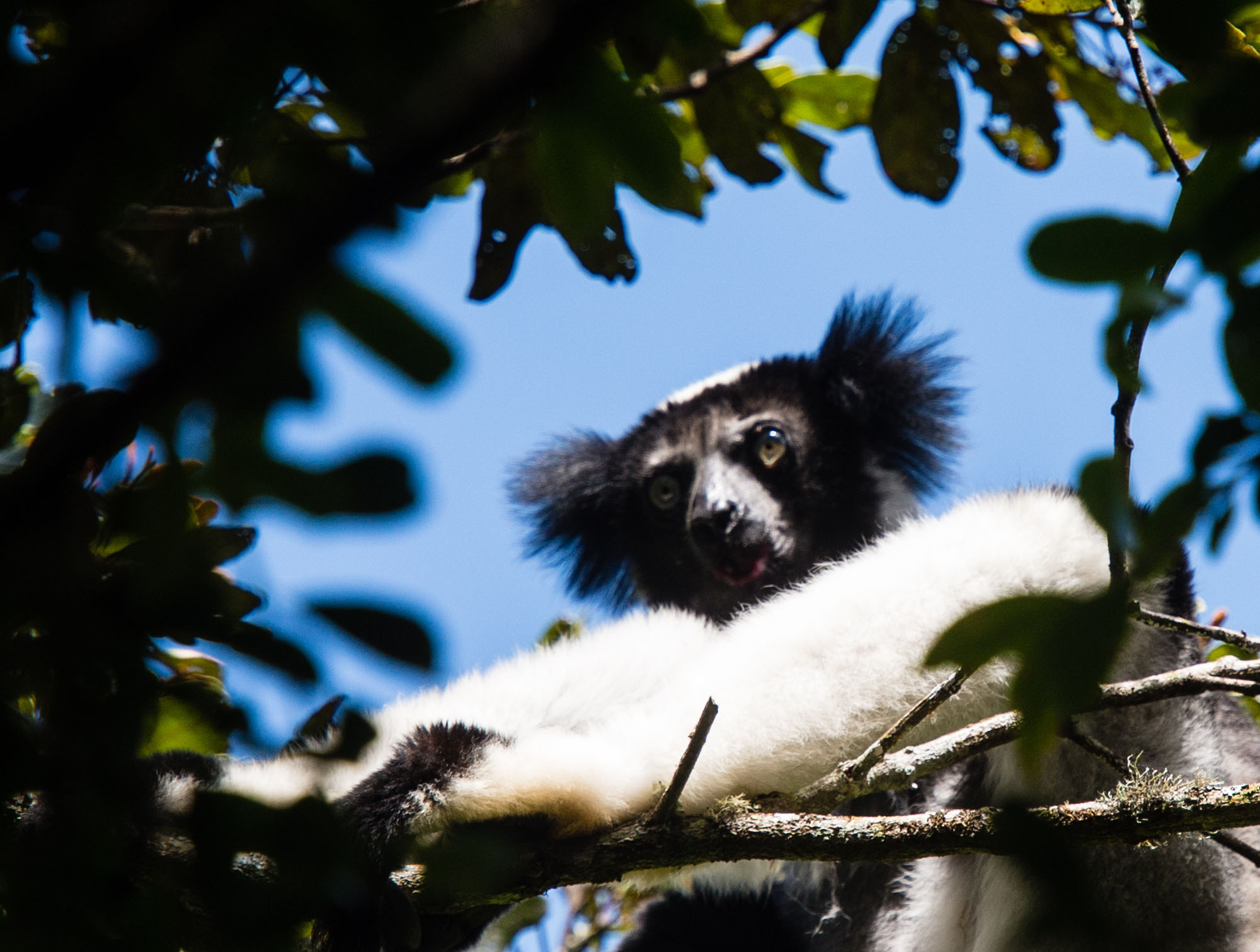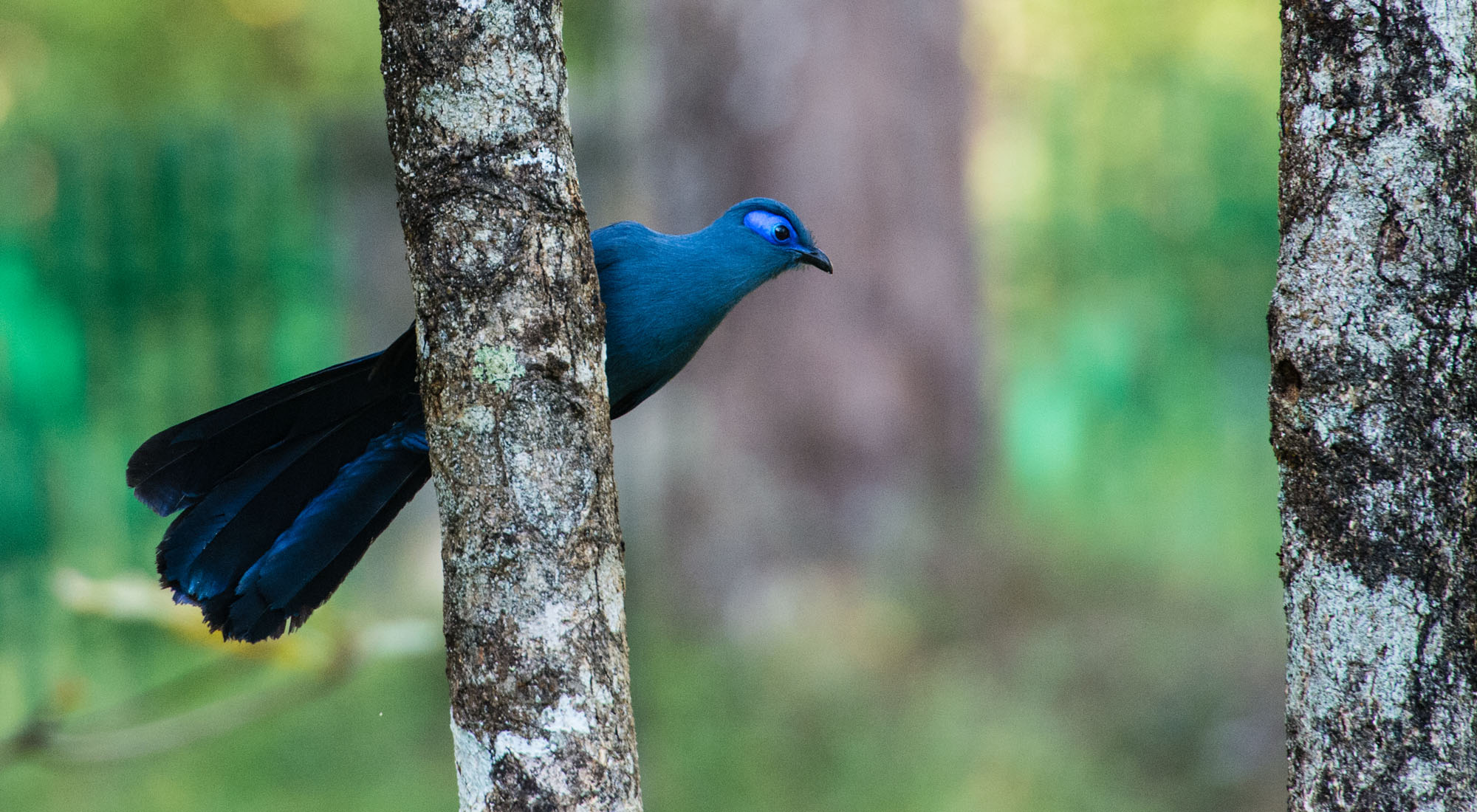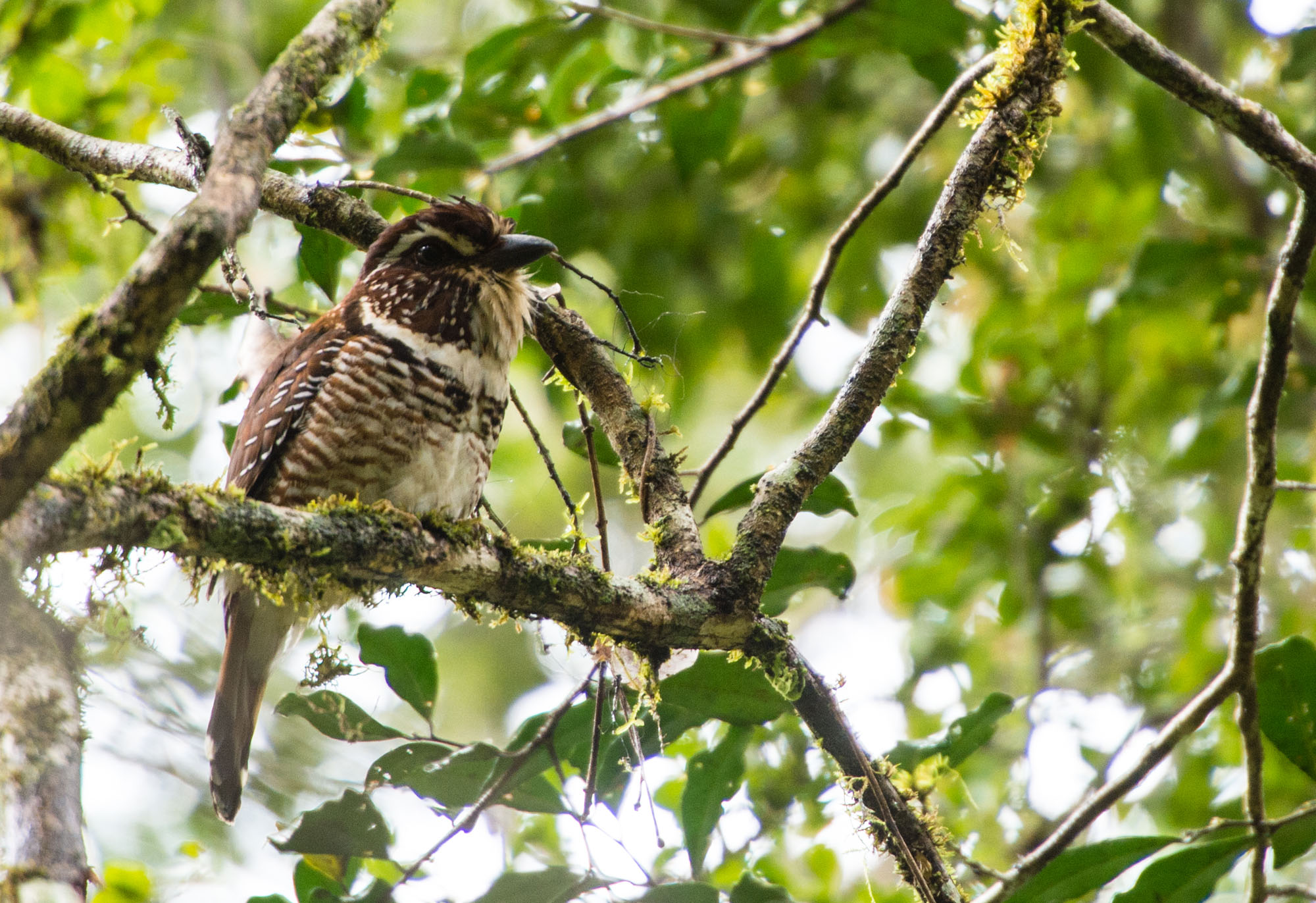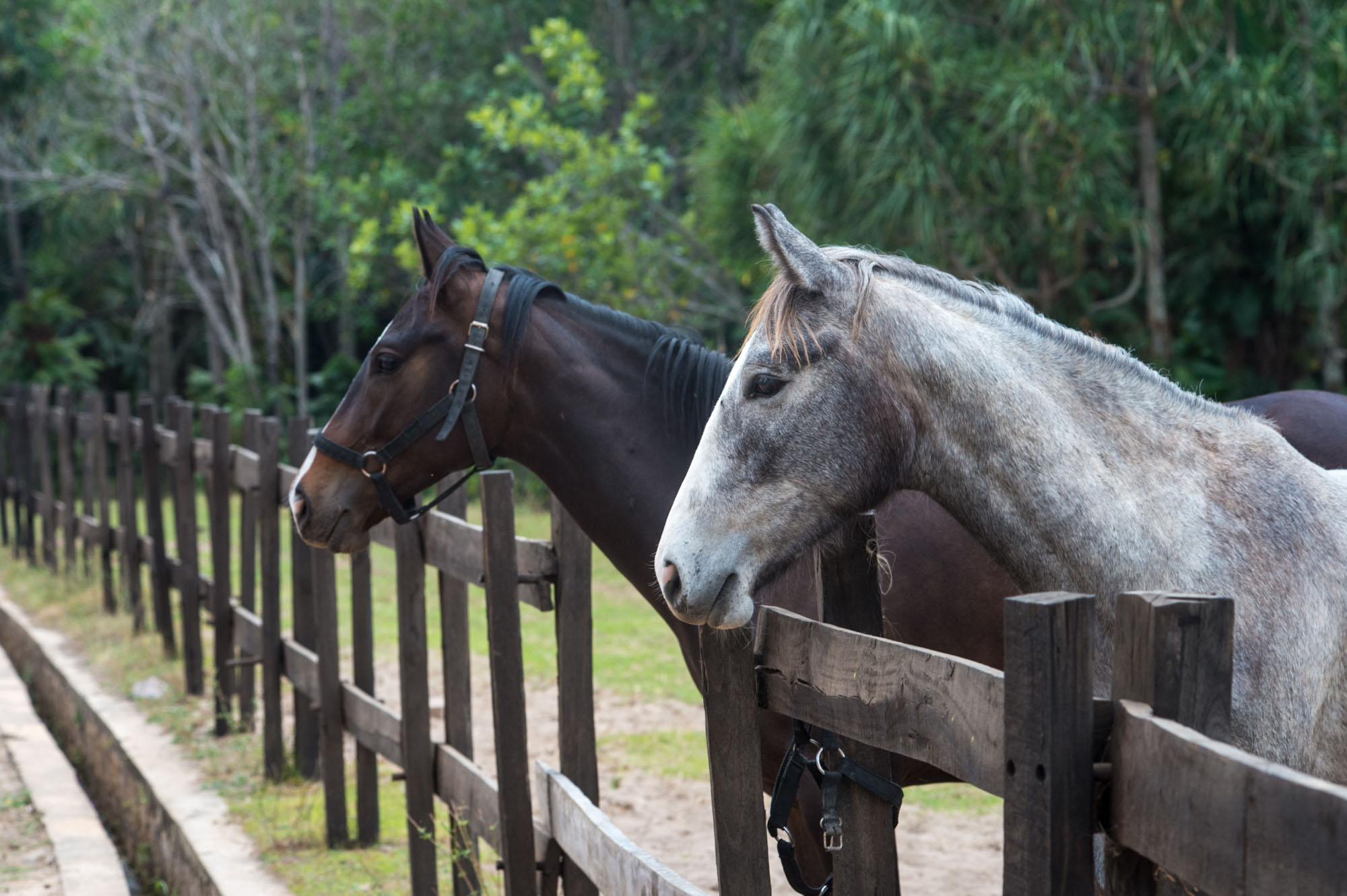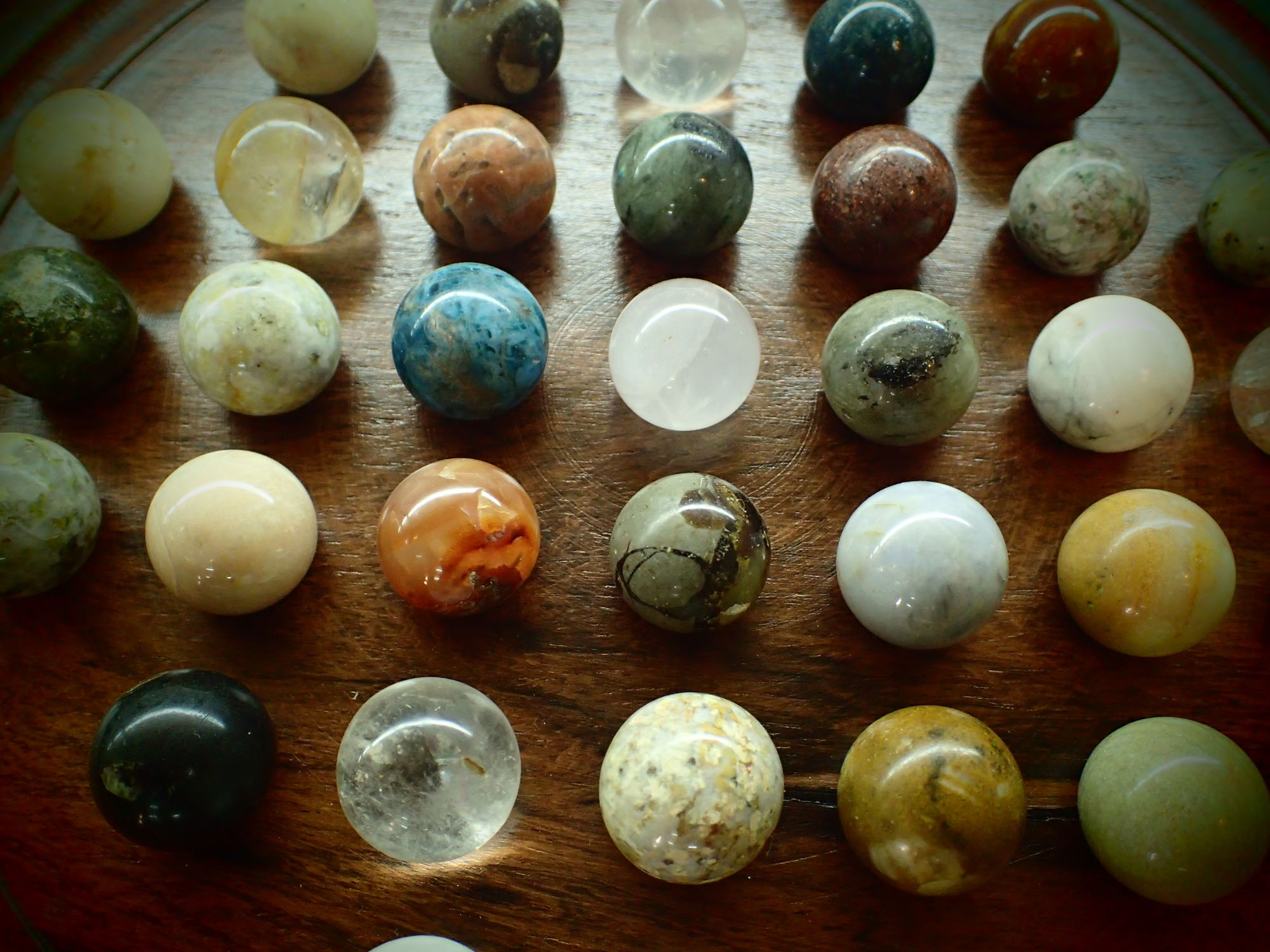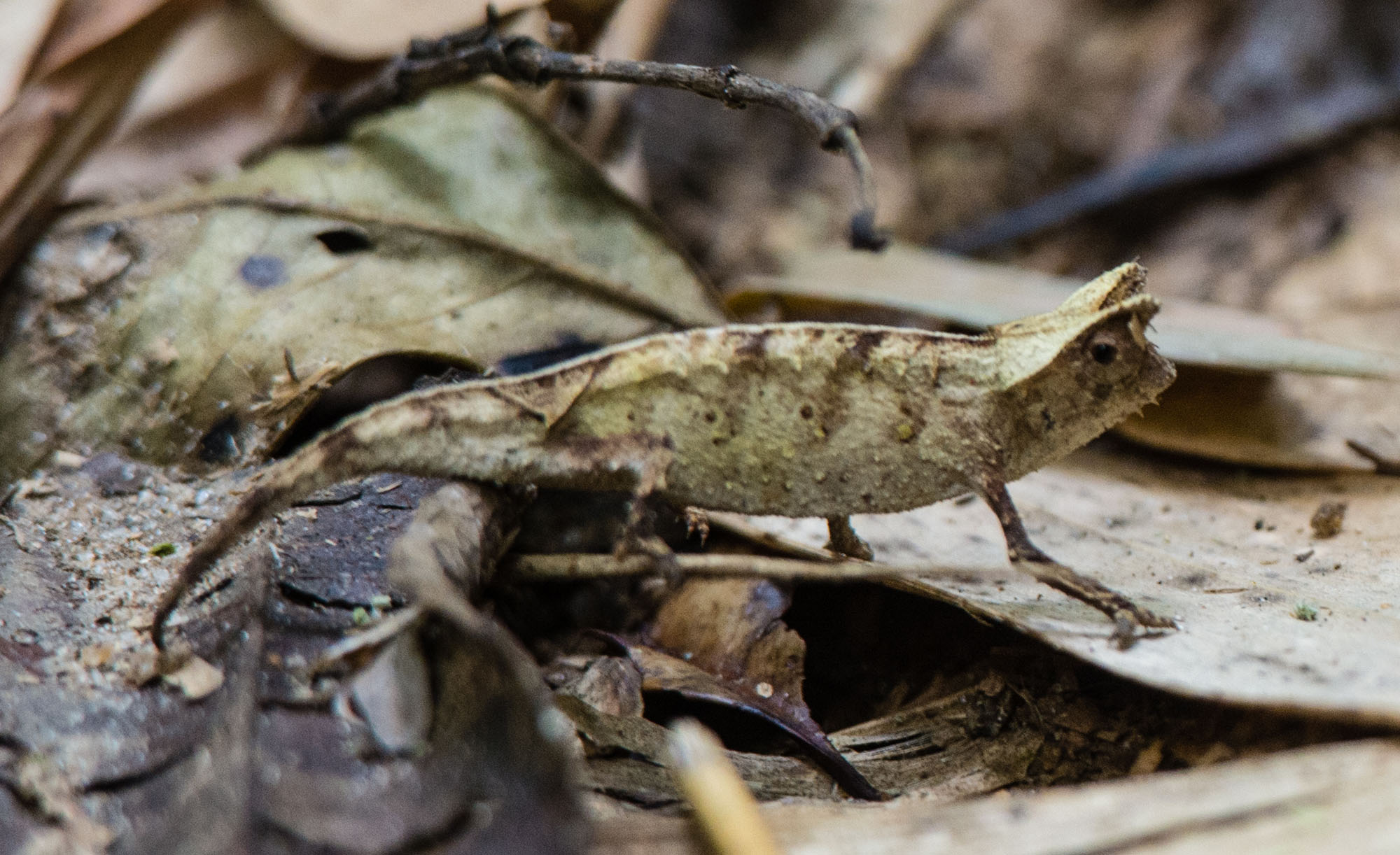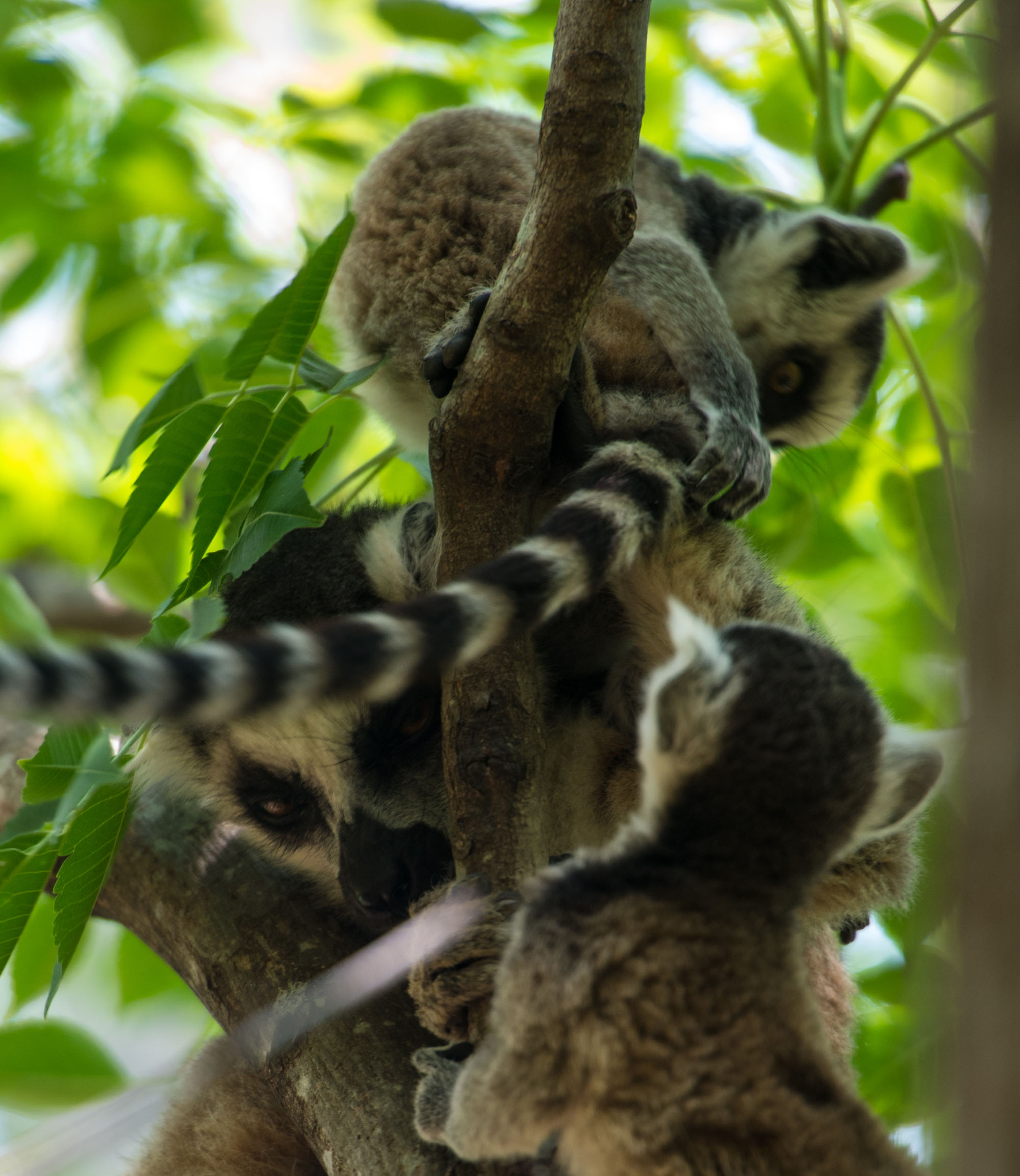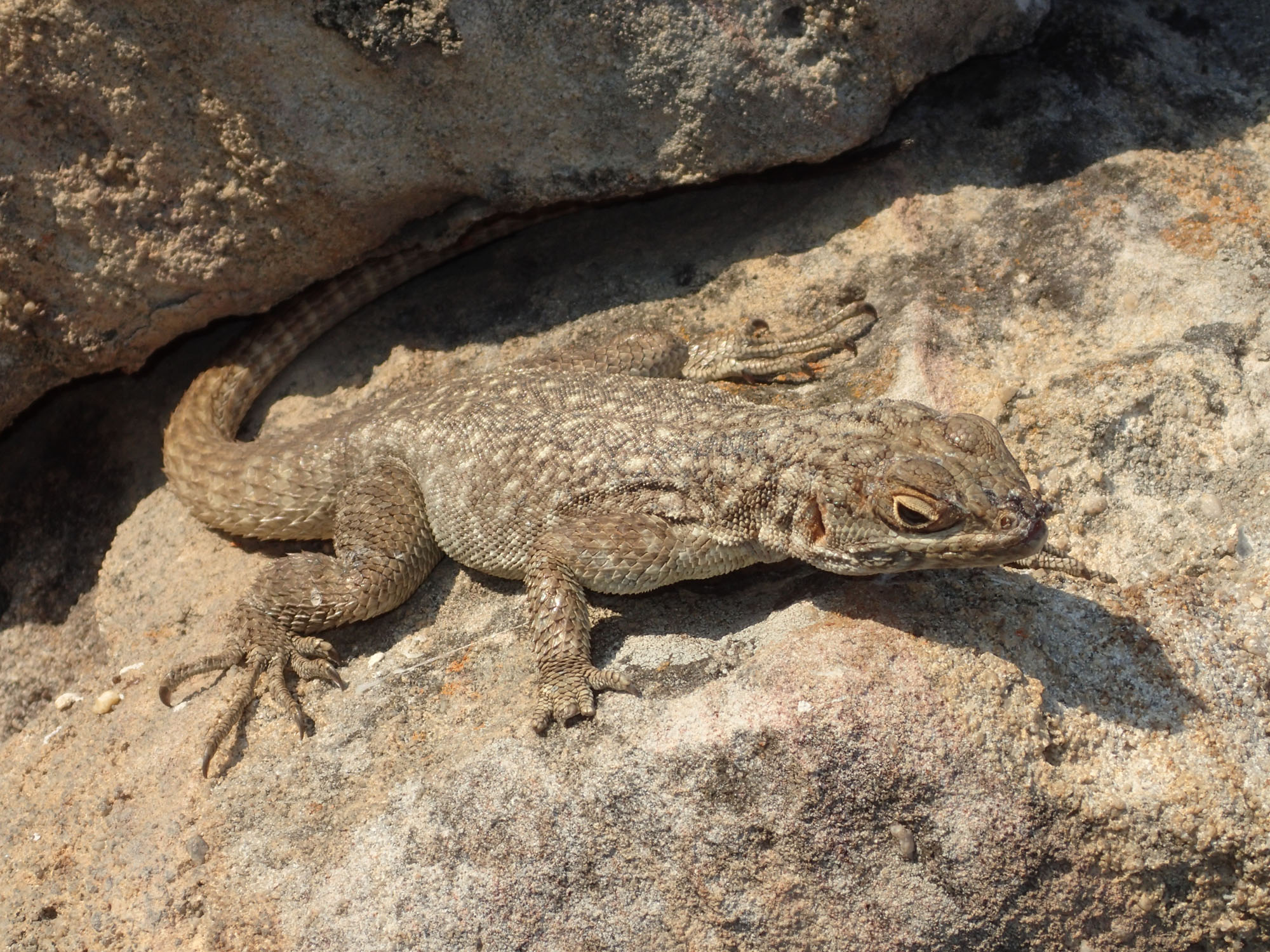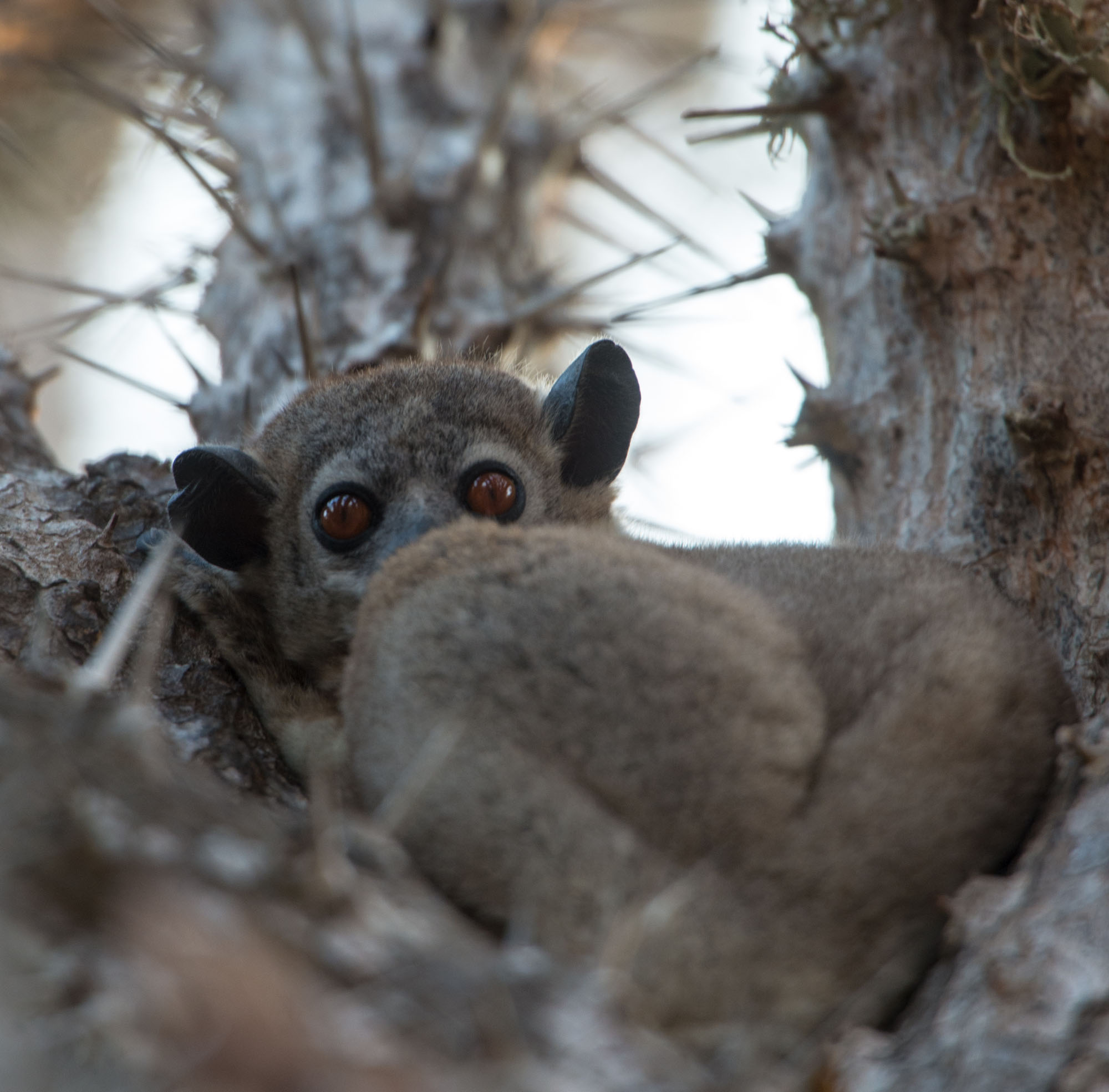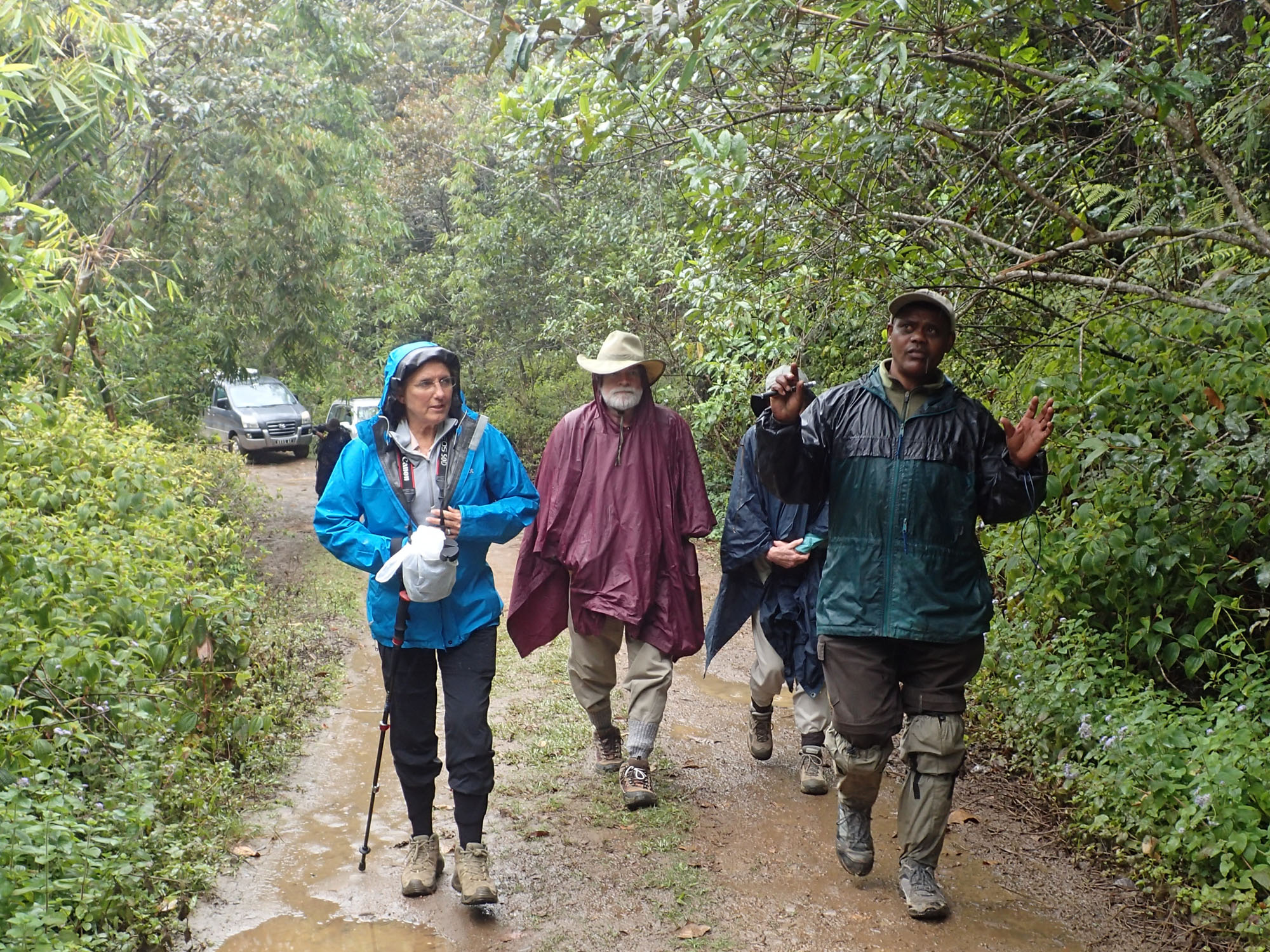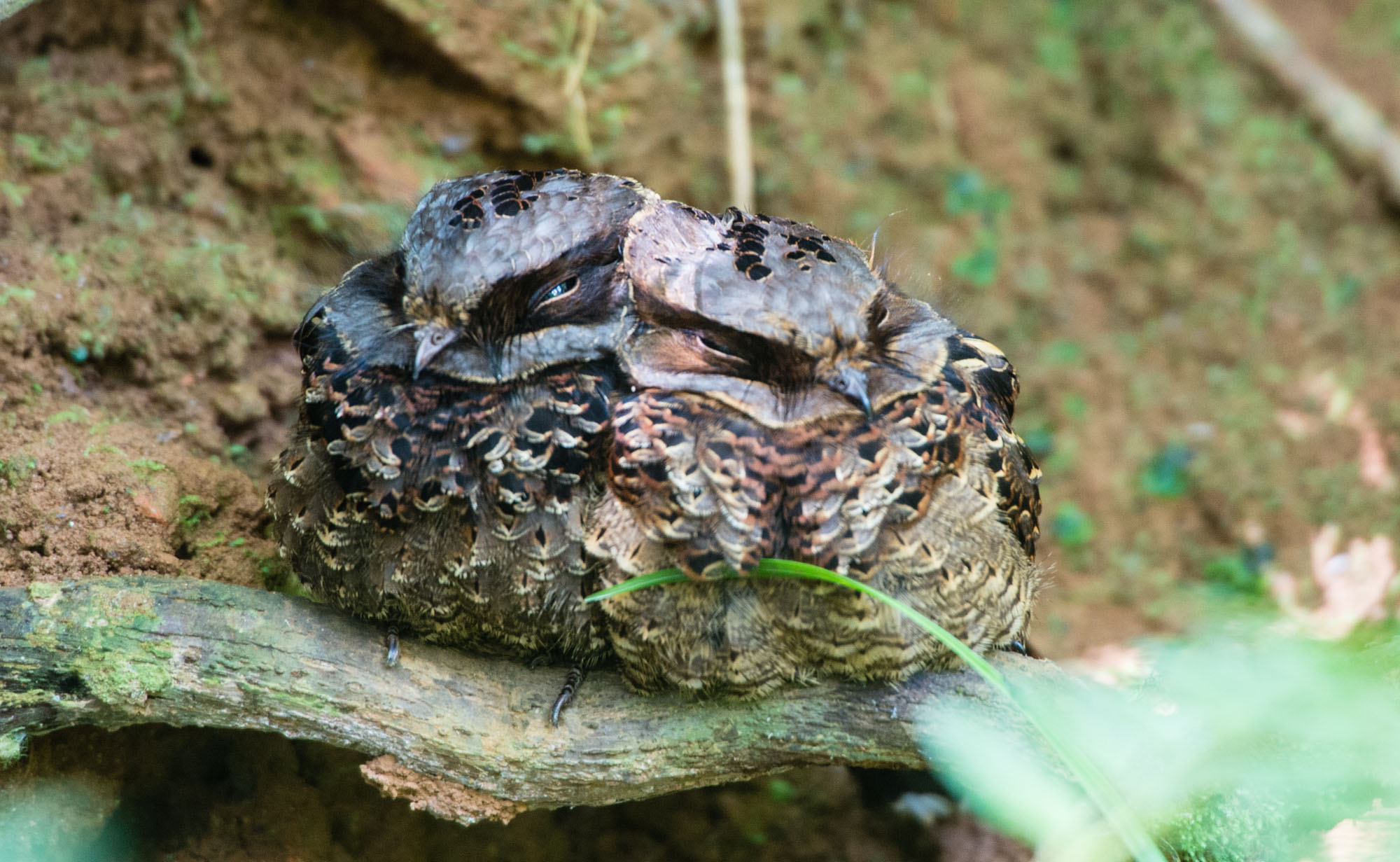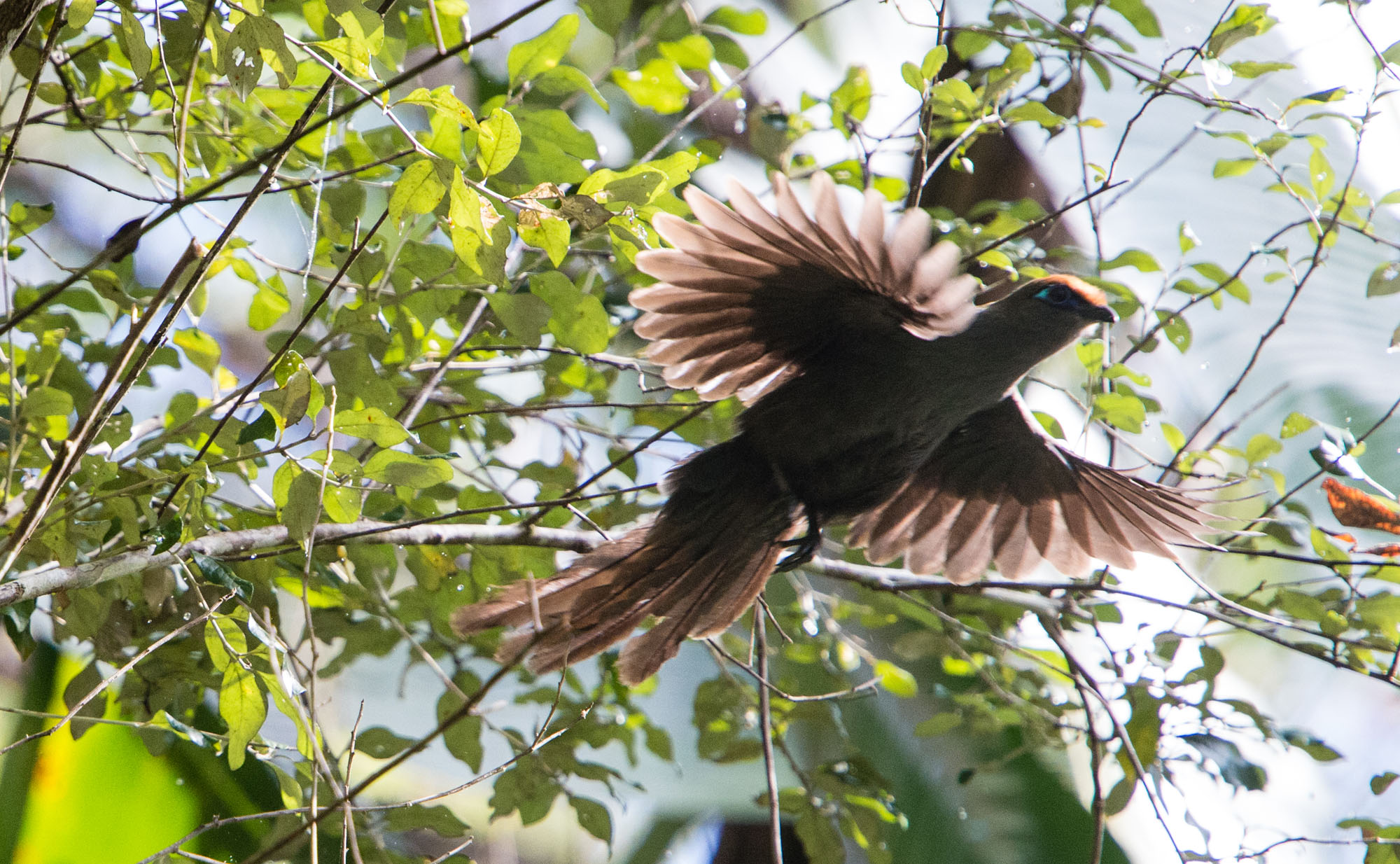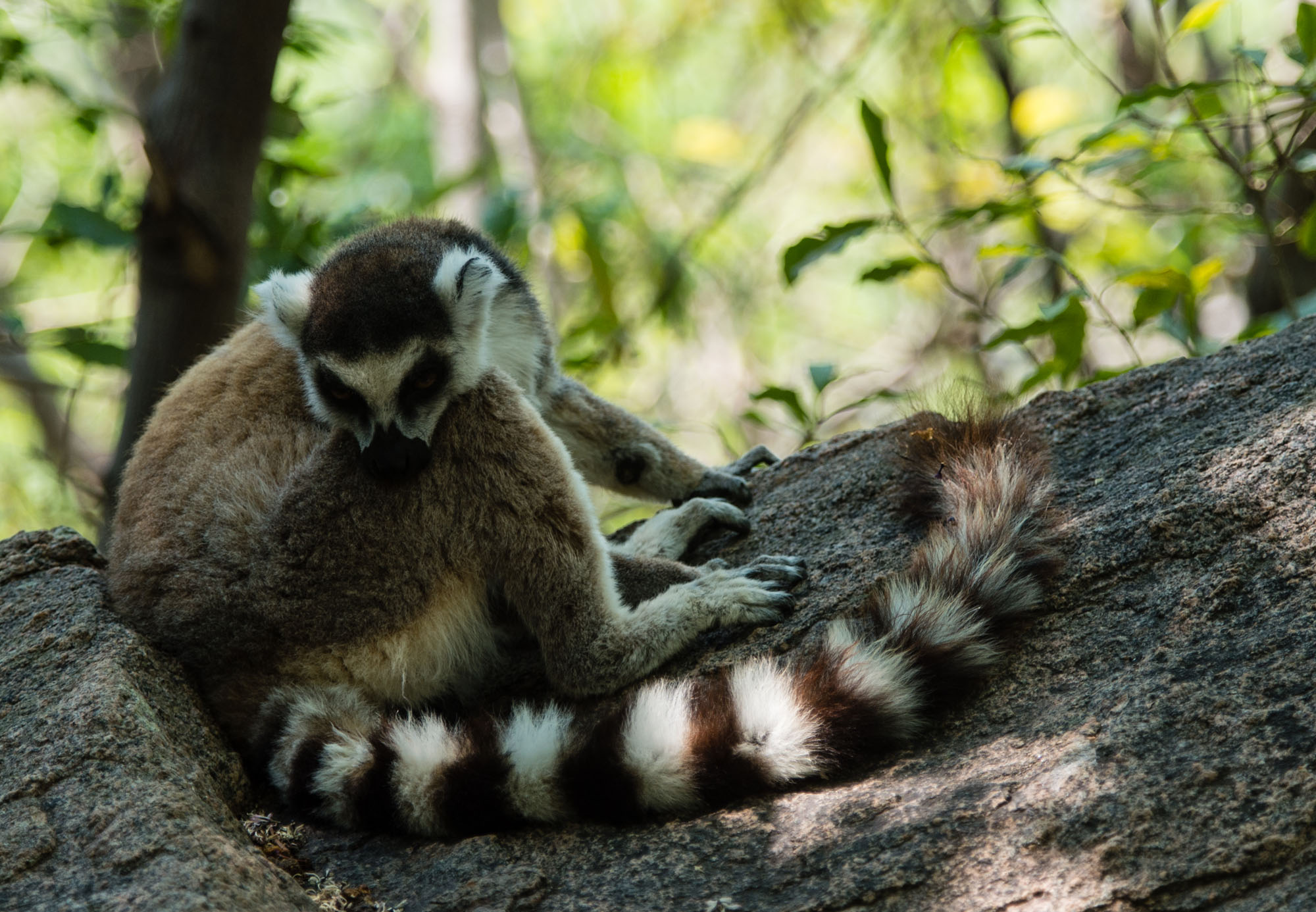By breakfast on day two I was hooked on Time & Tide’s Tsara Komba, an intimate island resort with 8 ocean facing chalets on the beautiful small island of Nosy Komba, in far northwestern Madagascar. All it took was a taste of the most divine ‘pain au chocolat’ followed by a bite of a perfectly executed croissant. Only the French could invent something quite as decadent and delicious as pain au chocolat. However, it takes an exceptionally gifted and dedicated chef like Tina Hary at Tsara Komba to get it just right. Light and airy, perfectly flaky, not at all greasy and with just the right amount of texture and color. A work of art. Does the local chocolate tip it over the edge from breakfast food to sheer indulgence? Bien sur.
Much the same can be said for the overall experience at Tsara Komba. At the time of our visit in early July the place was firing on all cylinders under the energetic and seemingly tireless direction of Resort Manager Nava and her capable team.
The setting and view
No doubt, there are equally good and maybe even better views at beach resorts elsewhere in the world than at Tsara Komba. What makes this one so special? It’s a multilayered cake. There’s a pretty sandy beach, beautiful vegetation behind, the cleanest of water in several shades of blue, other islands within view, an absolutely azure blue sky, smoky hills in the background, and almost always some pretty clouds just to enhance your photos even more. And the views don’t just pop at sunset and sunrise. All throughout our stay I would catch myself on one of the pathways, do a double take and immediately whip out the iPhone for yet another opportunity to tap on Raw, change the horizontal view to widescreen 16:4 and compose yet another pretty shot. They never stopped happening.
A bonus was the passing parade across the beach – mostly villagers walking from one village to another. As well as intermittent boat traffic in the bay, running the gamut from sizeable yachts to dhows big and small, motor boats, kayaks and right down to the tiniest of outriggers. All you need to add color and atmosphere to your Tsara Komba photos is a little creativity and patience.

The beach and ocean
Tsara Komba has a small but perfect beach which makes for a near flawless beach experience in the winter months, from about May through August and possibly a couple of months beyond, due to the prevailing winds being at their most favorable then. On all five days there we had practically no wind until later in the day. The absolute best part of the day was the early mornings from around 8 am to a couple of hours or so after lunch. Gorgeous sunlight and balmy temperatures, flat out perfect for sunbathing and wading into the ocean. Not surprisingly, the three or so elevated sunbathing platforms right in front of the lodge were almost invariably taken by 9. So as much as you’d like to linger over breakfast (more coffee, another pain au chocolat?), don’t dawdle too much as you’re going to have to settle for a spot under one of the raffia covered ‘umbrella’ structures right on the edge of the beach. Not that there’s anything wrong with that – the views are no less pretty. The seating is comfortable and it’s a short walk from there right into the water. Just not as private as the platforms, and not elevated.
The food
Everyone except the most die hard ‘meat and potatoes’ eater would swoon over the food at Tsara Komba. From breakfast to lunch to dinner, to a private romantic seaside dinner the day before we left, everything was flawlessly executed. We never did get to meet chef Tina Hary but we will never forget – and hope to have another chance to enjoy – his delectable panna cotta with a berry topping. Not to mention the array of fresh seafood dishes, culminating with a king prawn dish which we enjoyed on our last night at Tsara Komba.
Adding to the romance of the dining experience, there are no grubby printed or – perish the thought – laminated menus at Tsara Komba. And you don’t have to awkwardly point your smartphone at another QR Code either. It’s all done quite elegantly in the form of a large menu blackboard which is carted around from table to table with all of the choices for the specific meal, beautifully handwritten and ready for scrutiny. You may need a little help with the French, but the waitstaff are patient and keen to assist. Some of the lunch menu items are carried over into the dinner menu which seems odd the first day or two but you’ll get used to it. There are always some new and equally exciting other options for the subsequent meal.
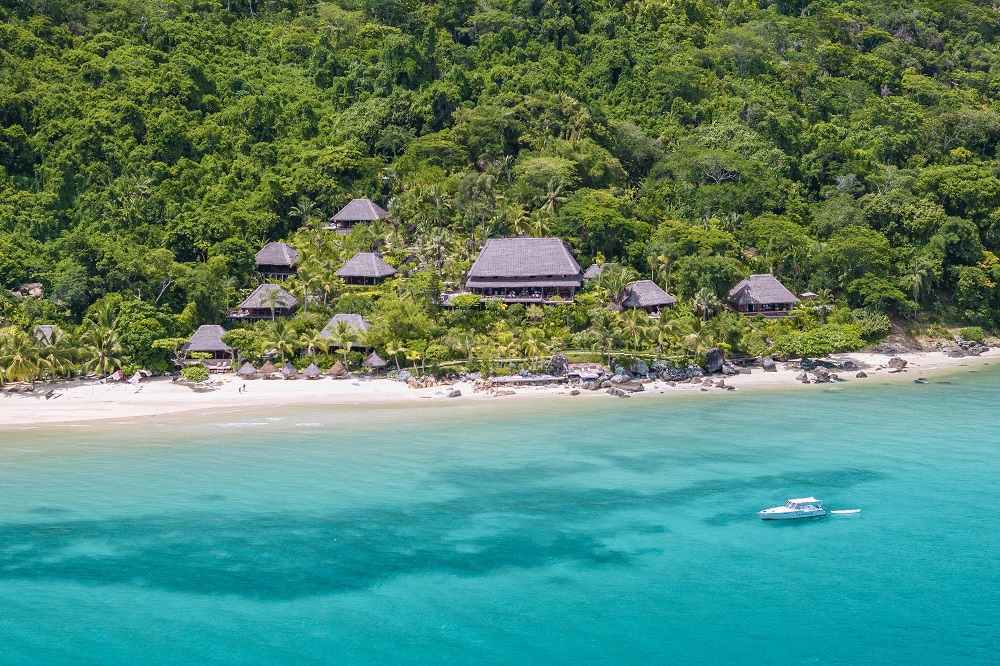
Activities
Activities at Tsara Komba start and end with swimming in the ocean off the beach right in front of the lodge. It is on the edge of a totally protected bay with no real waves to speak of. You can wade in as deep as you like without worrying about currents or riptides. Best of all: unlike many of the Kenya, Zanzibar and Mozambique beach resorts, it is possible to swim in the ocean here irrespective of the level of the tide and without having to wade half a mile to reach deeper water. One note of caution: there are some nasty-looking long-spined black sea urchins around so be careful where you step. Fortunately the water clarity is good enough to spot them before you step on them.
Hike up Nosy Komba island
It was 3 pm on a fairly hot day when our guide pointed up towards the peak of Nosy Komba island. “That’s where we’re headed, but not to worry, it will be ‘mora mora’ all the way. Mora mora, pole pole (in Malagasy and Swahili respectively) means slowly slowly. Which was just as well as this two hour hilly hike turned out to be more than moderately hard. I was expecting to see more in the way of local birds but that did not happen. It turned out that beyond the mature trees, much of the indigenous vegetation had been replaced with vanilla plantations, coffee plants, pepper vines, chocolate plants (cacao trees), jackfruit, and pineapple plants. The walk was quite steep up and rather challenging down, with lots of stepping onto and off rocks and other obstacles.
On the way back we walked through a village which had grown substantially since the Covid pandemic, with migrants from the mainland moving into the area for job opportunities. It was another good chance for close up views of the daily routine in a small coastal village. We observed inhabitants preparing dinner, enjoyed some interaction with a few children and checked out a couple of rudimentary grocery stores.
At the conclusion of the hike our Tsara Komba guide showed us his accommodation and a portion of the staff village. He also managed to coax a few beautiful black lemurs out of a very tall tree, with some judiciously dispensed bananas. The smaller males were rather reticent but I nonetheless managed several good captures.
Snorkeling on Nosy Tanikely
If there is one activity which we think all Tsara Komba guests should sign up for, it is snorkeling in the coral reefs just off the tiny island of Nosy Tanikely.
After a boat ride of about 25 minutes from the lodge, we walked onto the small beach at Nosy Tanikely which lies within sight of the main island of Nosy Be. For the first half hour or so, we scouted out the island – which is part of a marine national park – starting with taking a look at a mildly interesting natural history photo display. From there we took a path to a nearby lighthouse, one of several historical ones to be found all over Madagascar. We couldn’t resist making our way up to the top of the lighthouse while pondering the reason for the sign advising that only ten persons were allowed in the lighthouse simultaneously. Somehow I think the suspiciously rusty steps, dating back to 1908, have something to do with it. From the top, there are excellent views in practically every direction.
Two more reasons to visit Nosy Tanikely? It has a couple of species of introduced lemurs (we saw some of them high up in a tree) and there is a large colony of Madagascar giant fruit bats (flying foxes) in a tree not far from the shoreline. In the binoculars we could make out their shapes hanging upside down, like large dark avocados.
And then there is the snorkeling. In my life I had only experienced a few really entertaining snorkeling experiences, in the Cayman Islands decades ago and more recently in the Kona area of Hawaii.
The moment I stuck my face under the water at Tanikely, I realized that the snorkeling there was going to be special. And was it ever. Suddenly all around me was the most incredibly beautiful underwater ‘rock garden’ with a dazzling array of intricate, even stunning coral forms and patterns. From shelves that looked like giant flat mushrooms to tabletops to overgrown heads of cauliflower.
And literally everywhere the most jaw-dropping variety of fish one could ever imagine in a natural setting. There were huge schools of tiny fish which seemed to emit the most beautiful flashes of blue light as the sun reflected off their constantly moving, constantly shifting forms.
In other spots there were tightly packed schools of slender, substantially bigger fish to be seen, all seemingly moving as one as they instinctively maneuvered to evade the danger which my lumpy form no doubt represented.
Mostly though, the experience was one of constantly focusing and refocusing on different fish, from the most dainty angelfish to powerful looking specimens which kept a discreet distance.
There were a few misses or maybe also-rans in the activity list. To be clear this reflects my personal, subjective impressions of the activities. Other visitors may experience these in a totally different – hopefully more enjoyable – way. Also, this is not the conclusive list of Tsara Komba activities and outings. There are several more such as a day outing to Nosy Iranja (a renowned snorkeling area), discovering the botanical garden, scuba diving, snorkeling (sometimes with whale sharks in season), visiting Lokobe National Park, other fascinating island visits and more.
Local fishing outing
We went out with a couple of local fishermen one morning to try our luck with hand lines from a boat, fishing over a shallow reef about a kilometer out from the shoreline. It was largely a waste of time with the tiny fish mostly stealing the bait. I tried unsuccessfully a few times before quitting, when it became apparent that there were no good-sized fish around. Kathy brought in quite a few as did the Tsara Komba gardener, who is a keen amateur angler.
Sundowner cruise to the mangroves
A sundowner cruise to a nearby mangrove forest did not quite live up to its ‘romantic’ billing. Indian Ocean mangrove forests are by their very nature not the most exciting of habitats. Mostly just green. With just one or two species of trees and lots of leaves. So watching the regular green turn to vivid green in the late afternoon sun while sipping on a rum based cocktail (Kathy) or a Diet Pepsi (me) was not the most scintillating activity. I’d say skip it. If Tsara Komba wanted to improve the sundowner activity they can start with the snacks. We were hoping for something a bit more varied and exciting than some plain canned black olives. To be sure, It was mildly entertaining and – yes – romantic, watching the sun actually set on the slow boat ride back to the lodge. Just the two of us in the back of a boat, the golden light giving us back a few long-lost years.
Boat excursion around Nosy Komba
A last minute decision to do a boat ride around Nosy Komba island was interesting but not quite what we had in mind. I had envisaged a private boat outing with some opportunities to take impromptu, informal photos of village life and coastal scenes. Instead our skipper pretty much went full speed to the main village on Nosy Komba. Which I’m afraid is quite commercial with a lengthy walkway lined with vendors, terminating at the entrance to a lemur park. Where the local guide asked if we each wanted to hold a banana or piece of a banana which would have netted us a lemur on the shoulder. Of course, we demurred. Instead, I took a few pictures of two groups of black lemurs being lured quite close to us, the reward being pieces of said bananas. It was not our cup of tea. All in all I suppose feeding the lemurs for the benefit of gawking tourists is not the worst of sins. It’s just not what we travel to countries like Madagascar for.
In other respects the village was quite entertaining with (as usual) lots of kids around, women working in crafts, others having their hair braided, and quite a few people chewing khat, a natural plant source of methamphetamine. As Malagasy villages go, this one seemed a bit more organized and not as squalid as some we had seen elsewhere. Kathy thought many of the items for sale – such as the crocheted tablecloths- were worth closer scrutiny.
We were entreated to enter and tour a local museum but by that time our tourist chops had abandoned us and we skipped it. Maybe another time.
If you want to learn a bit more about getting to Tsara Komba and how to combine it with one or two other spots in Madagascar – or make it an add-on after or before a mainland Africa trip – email Bert at bert@fisheaglesafaris.com. Otherwise, please leave a message with our answering service by calling 1-800-513-5222 literally any time; someone will get back to you.


